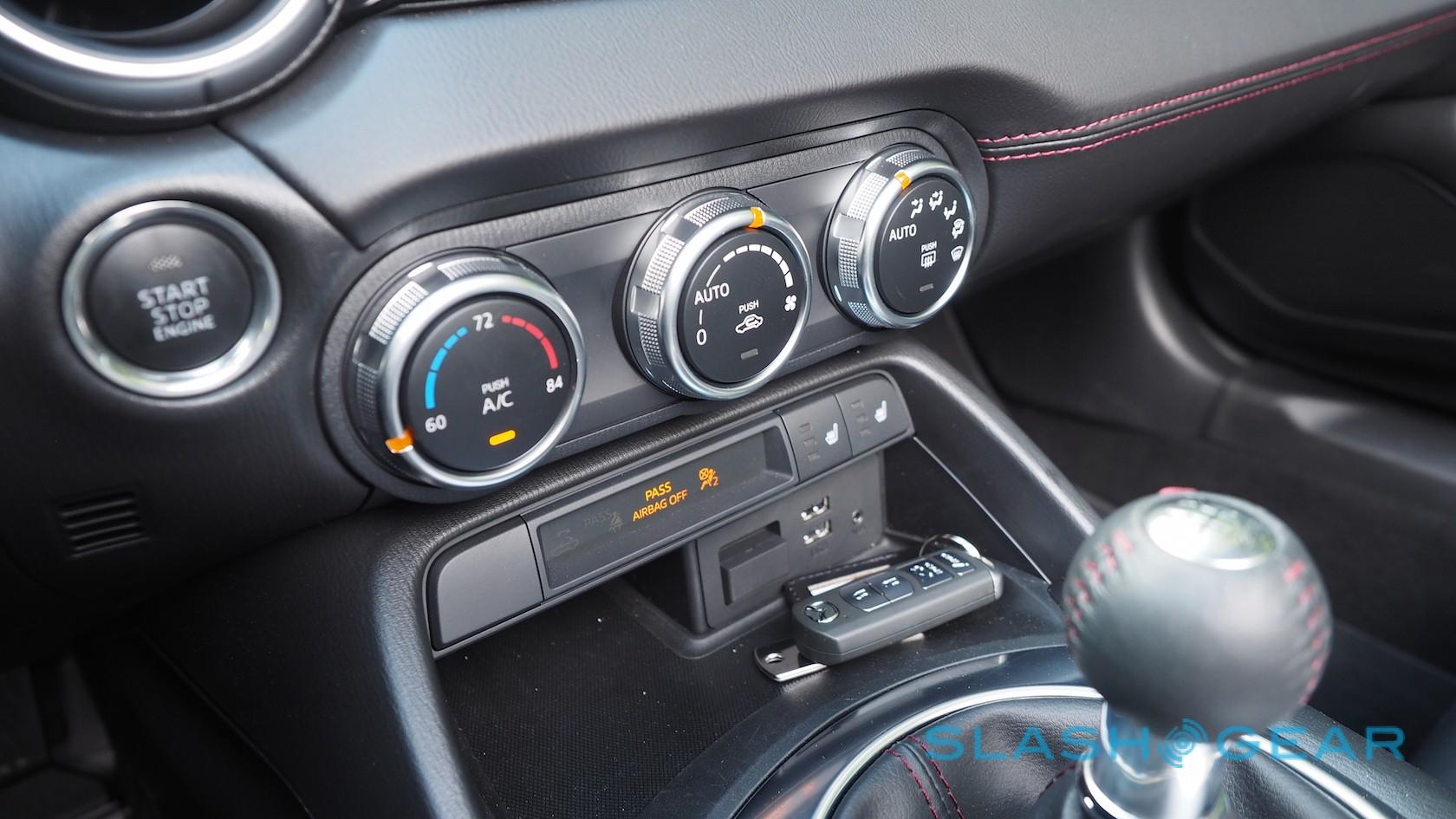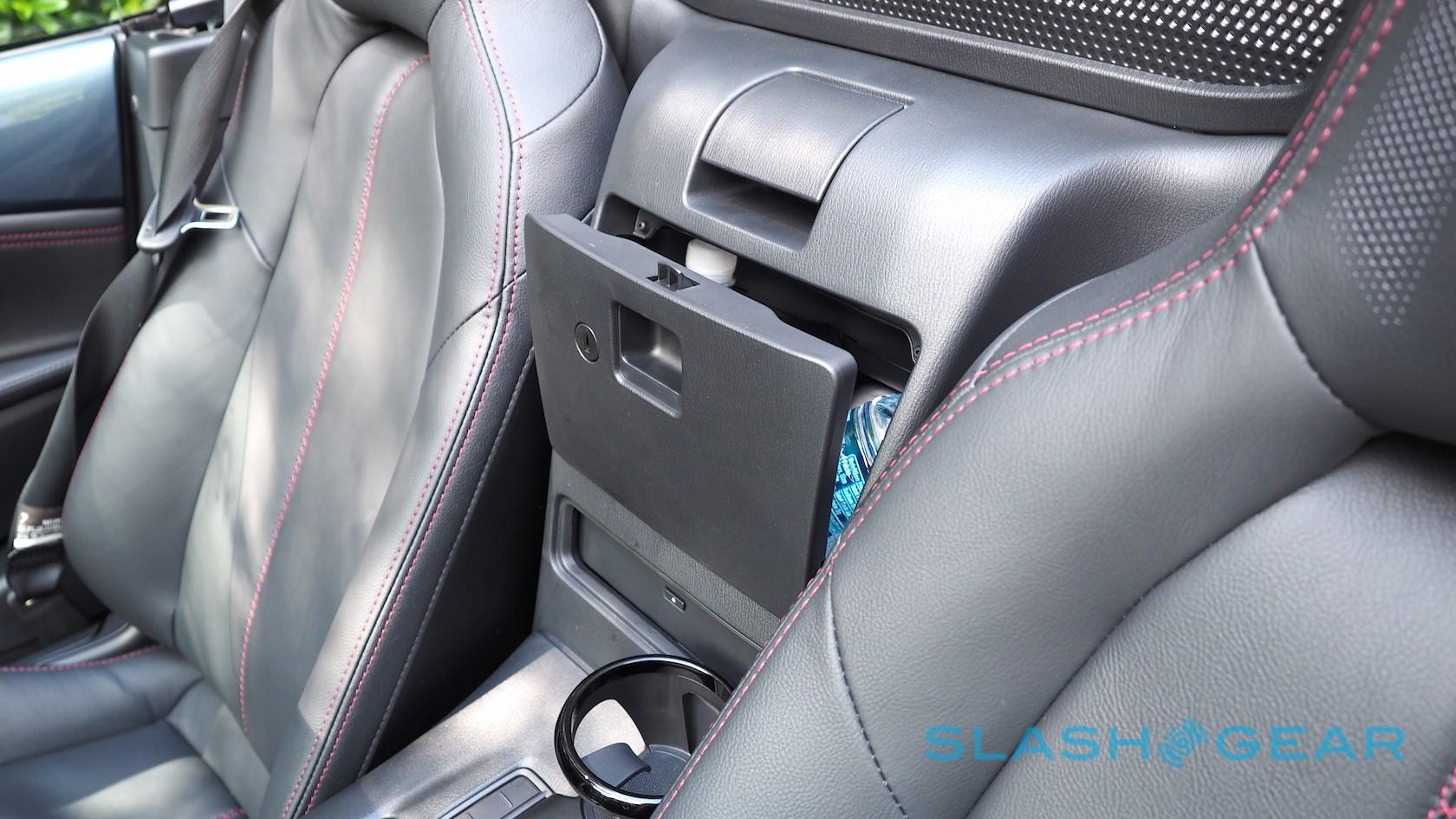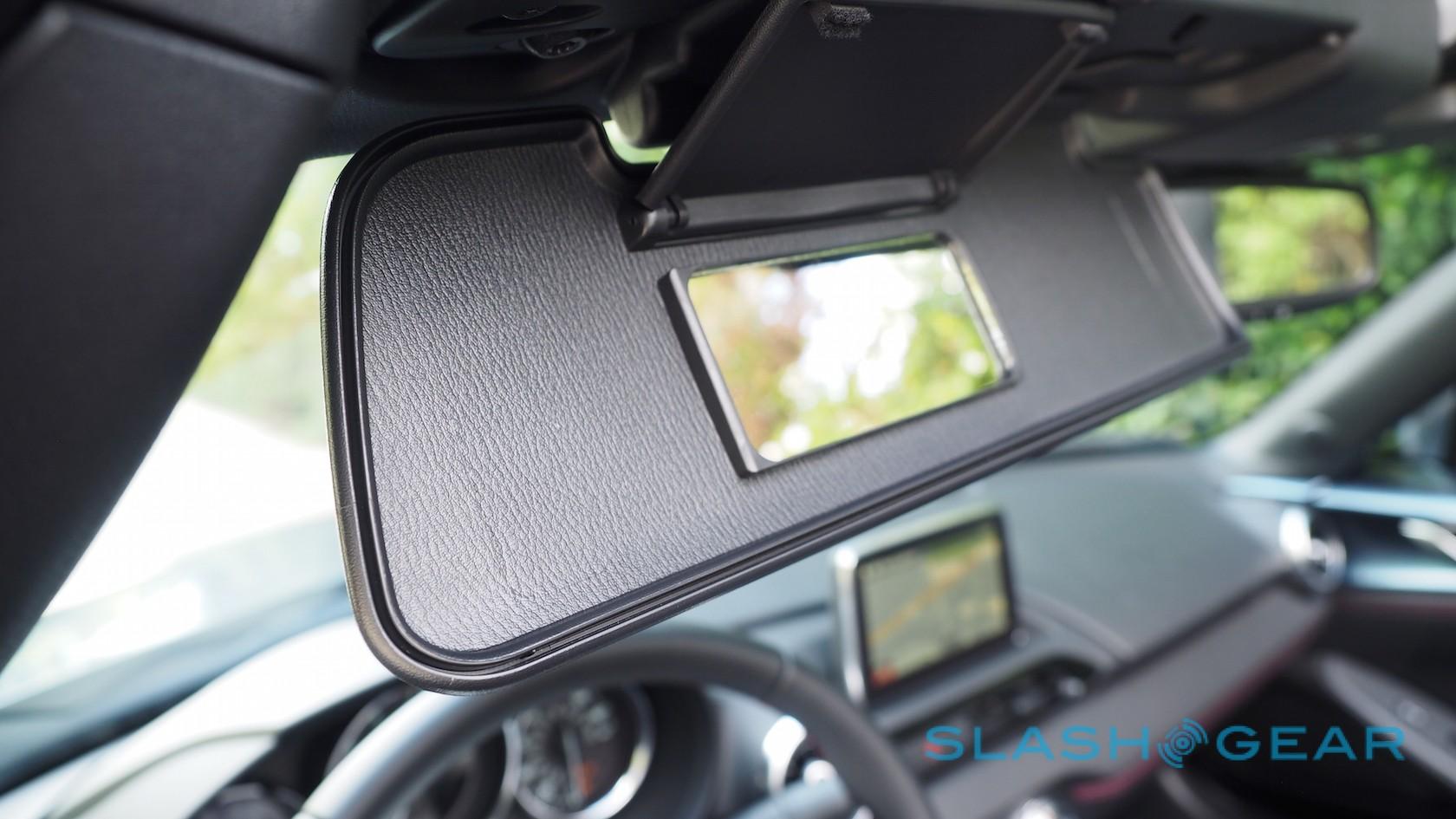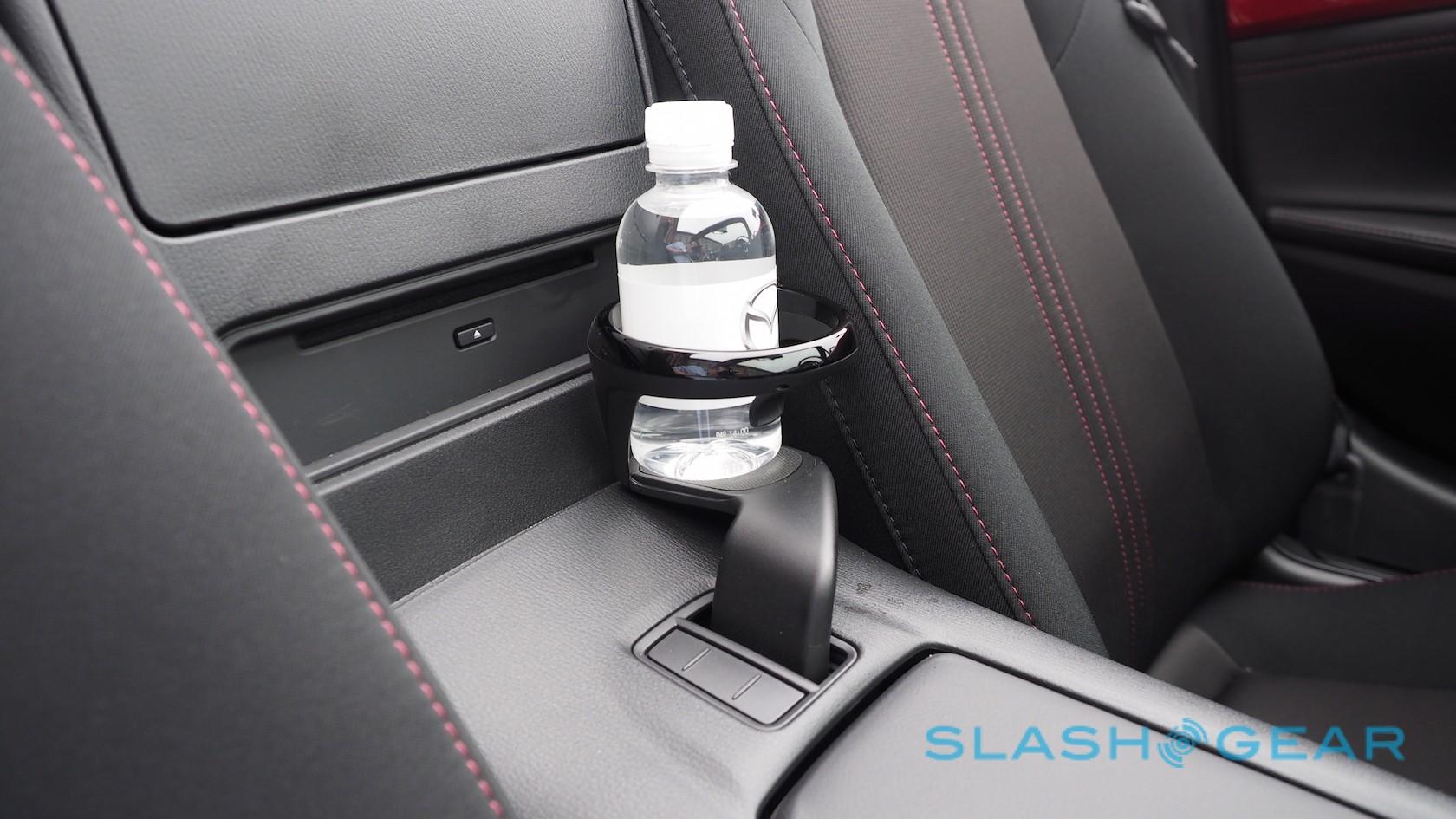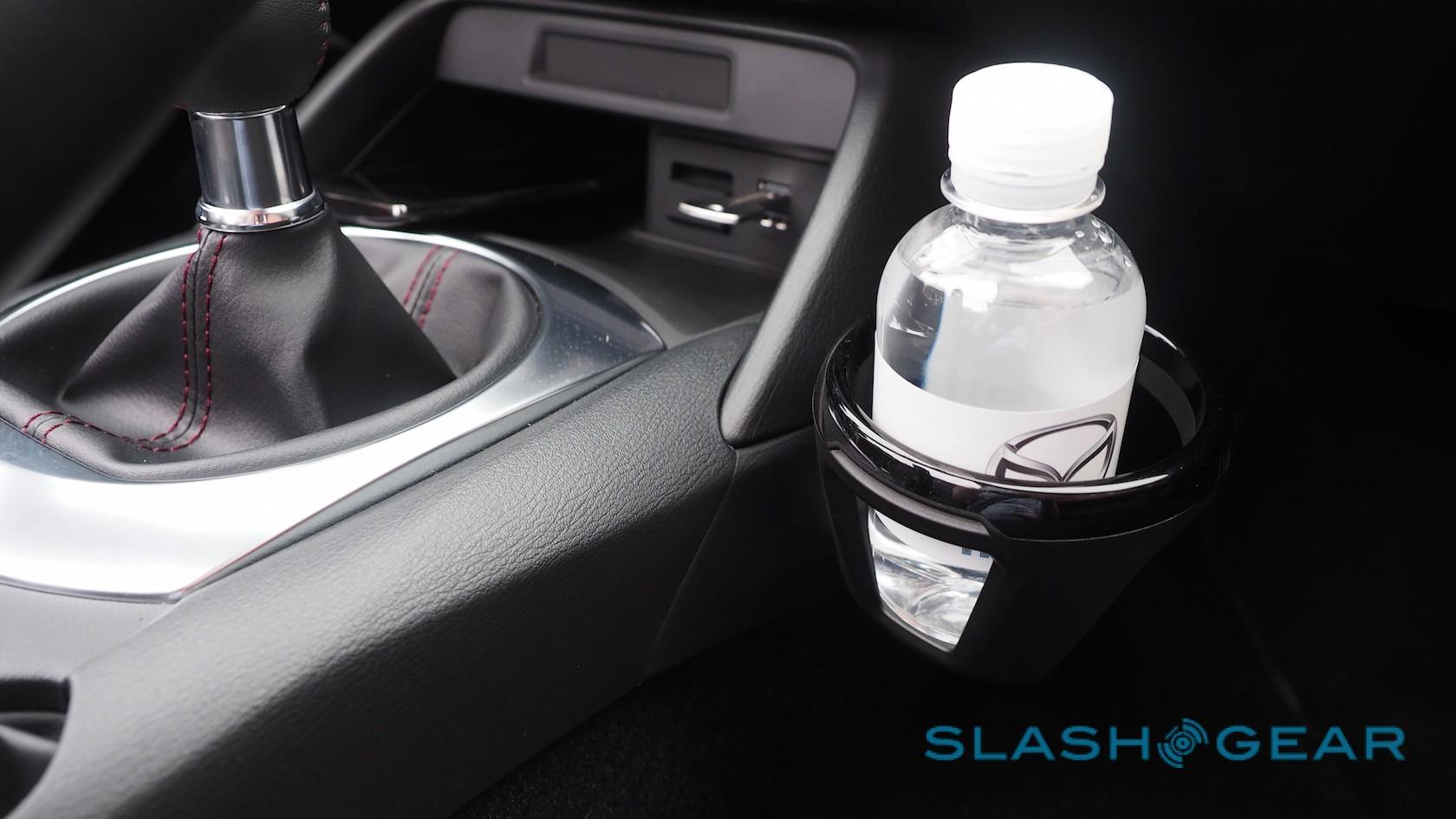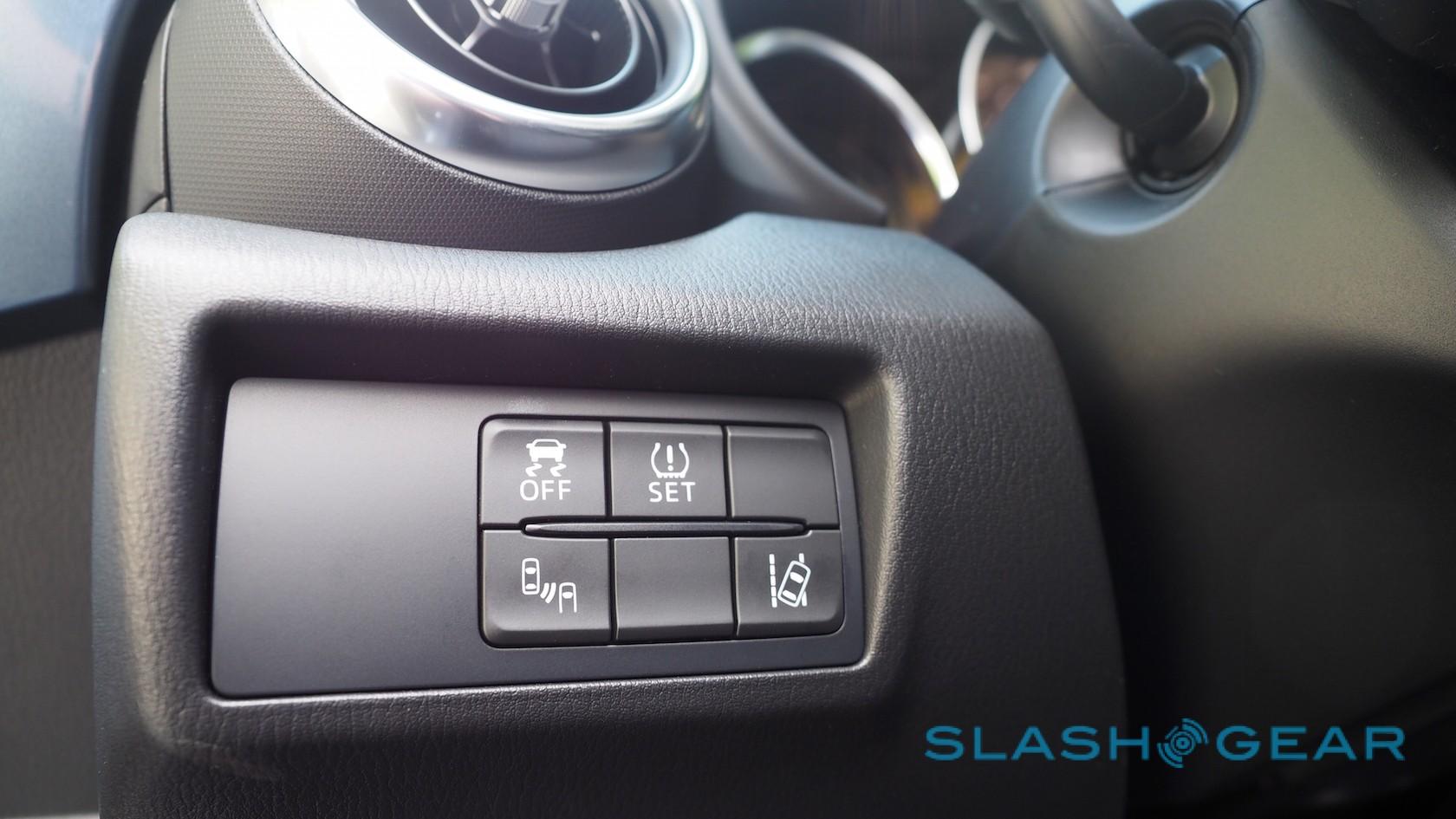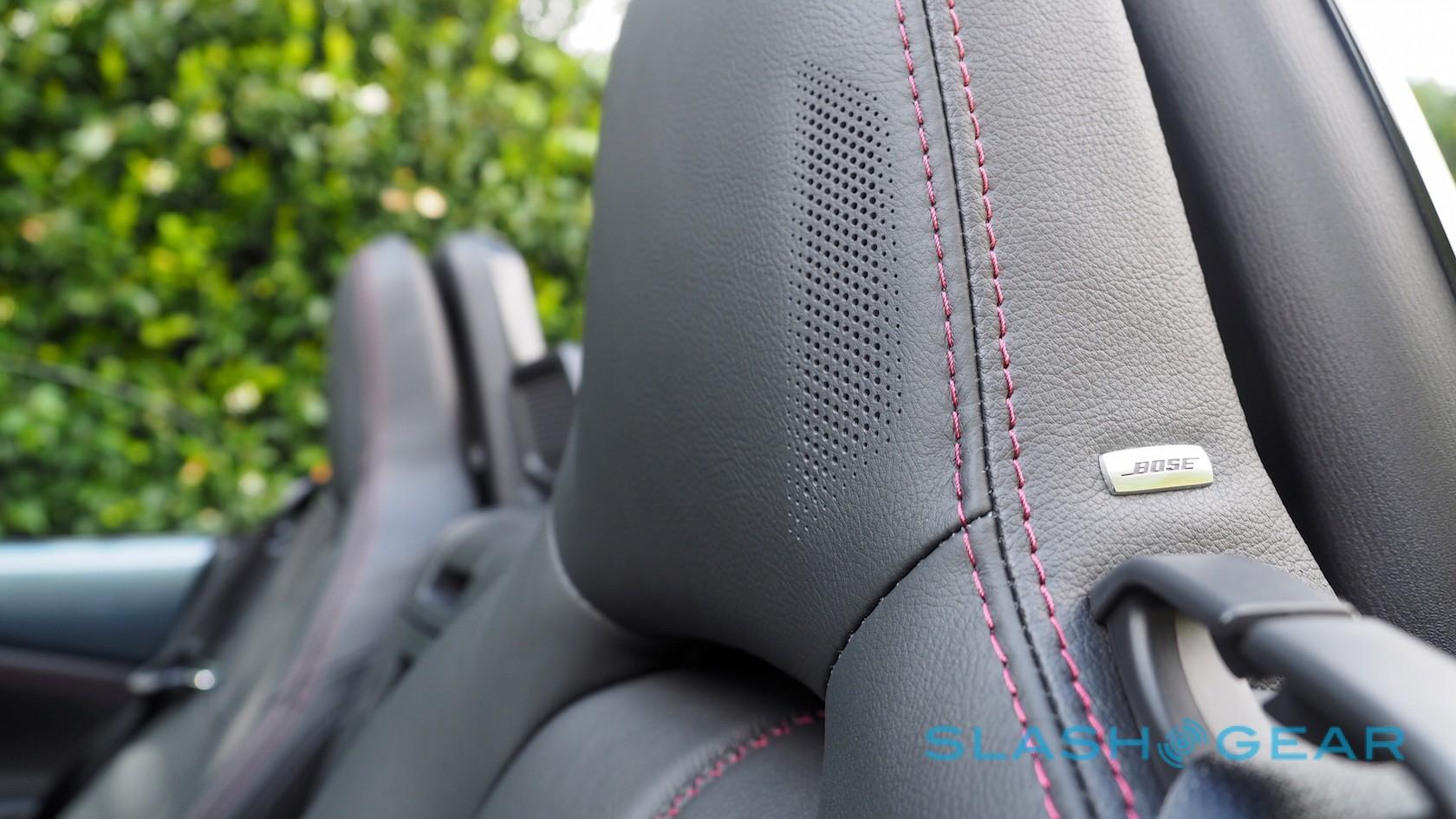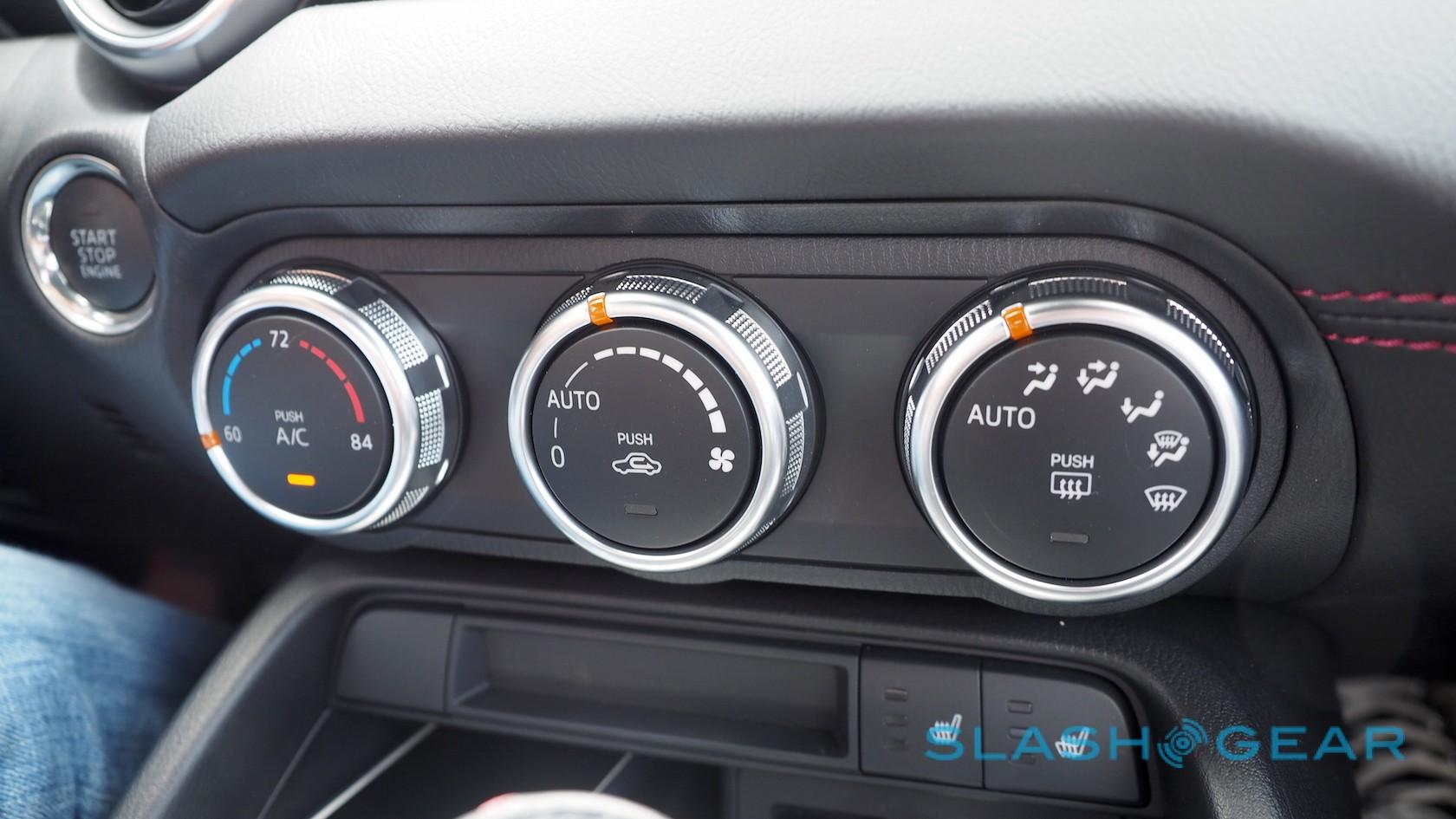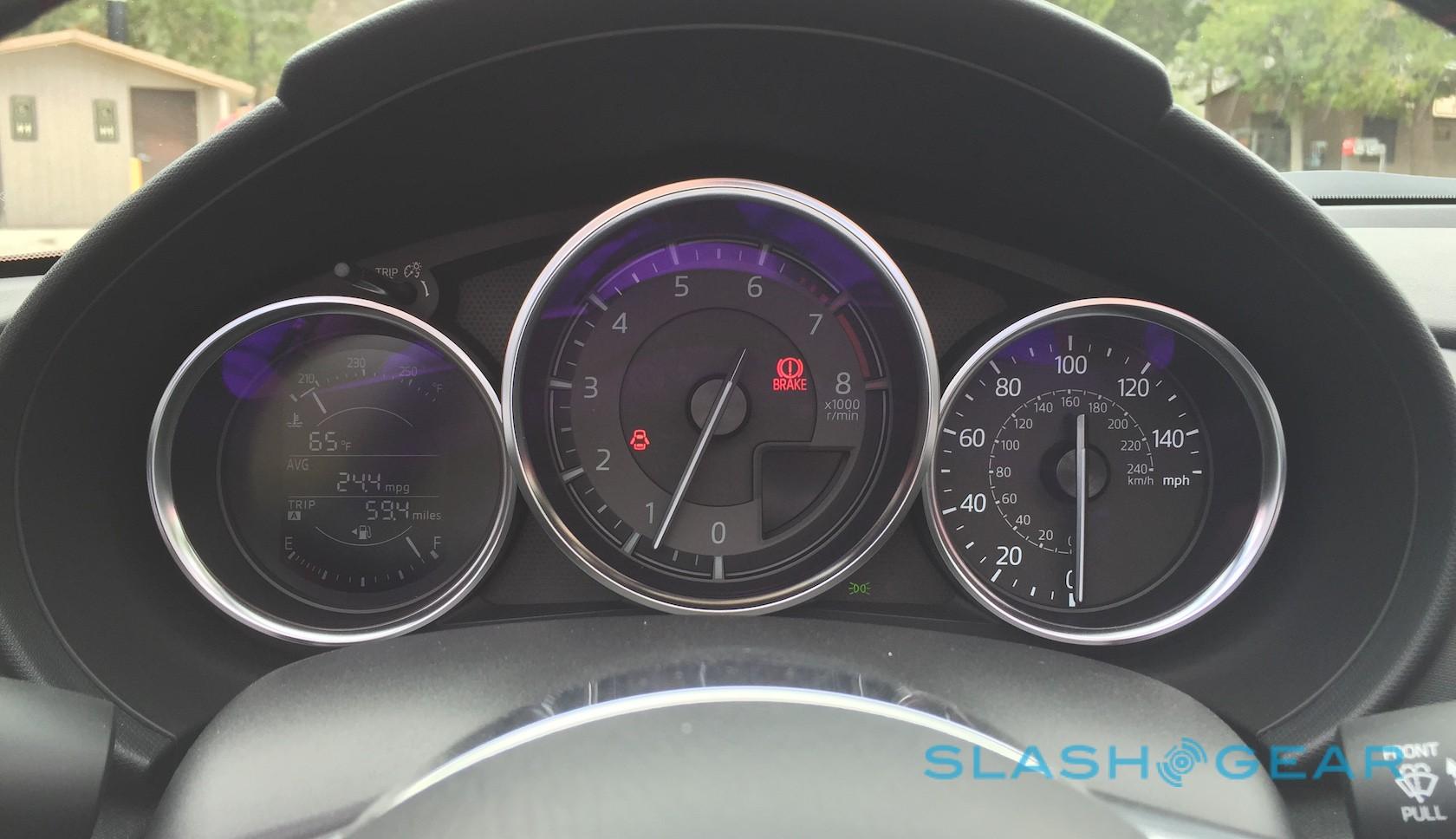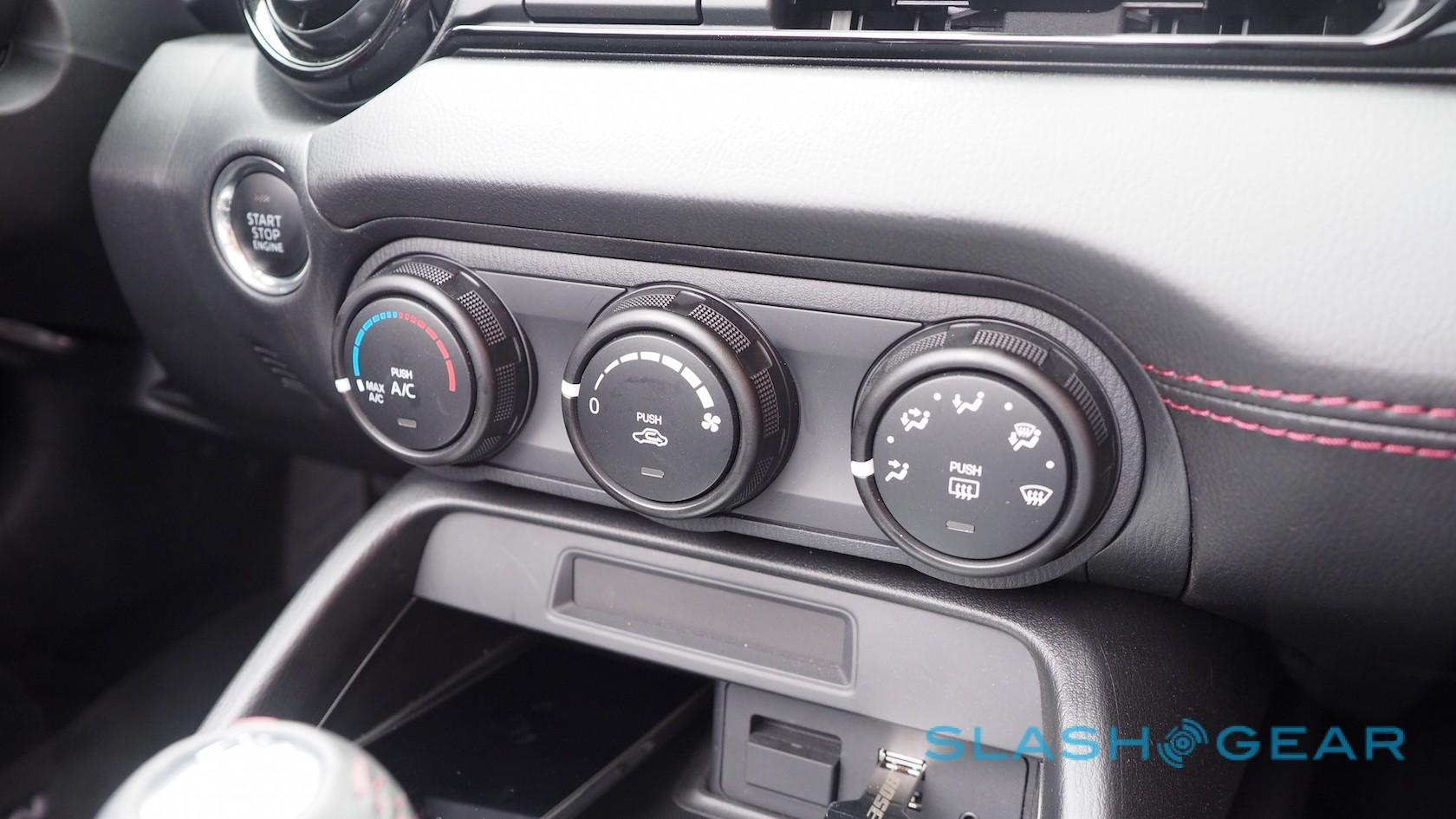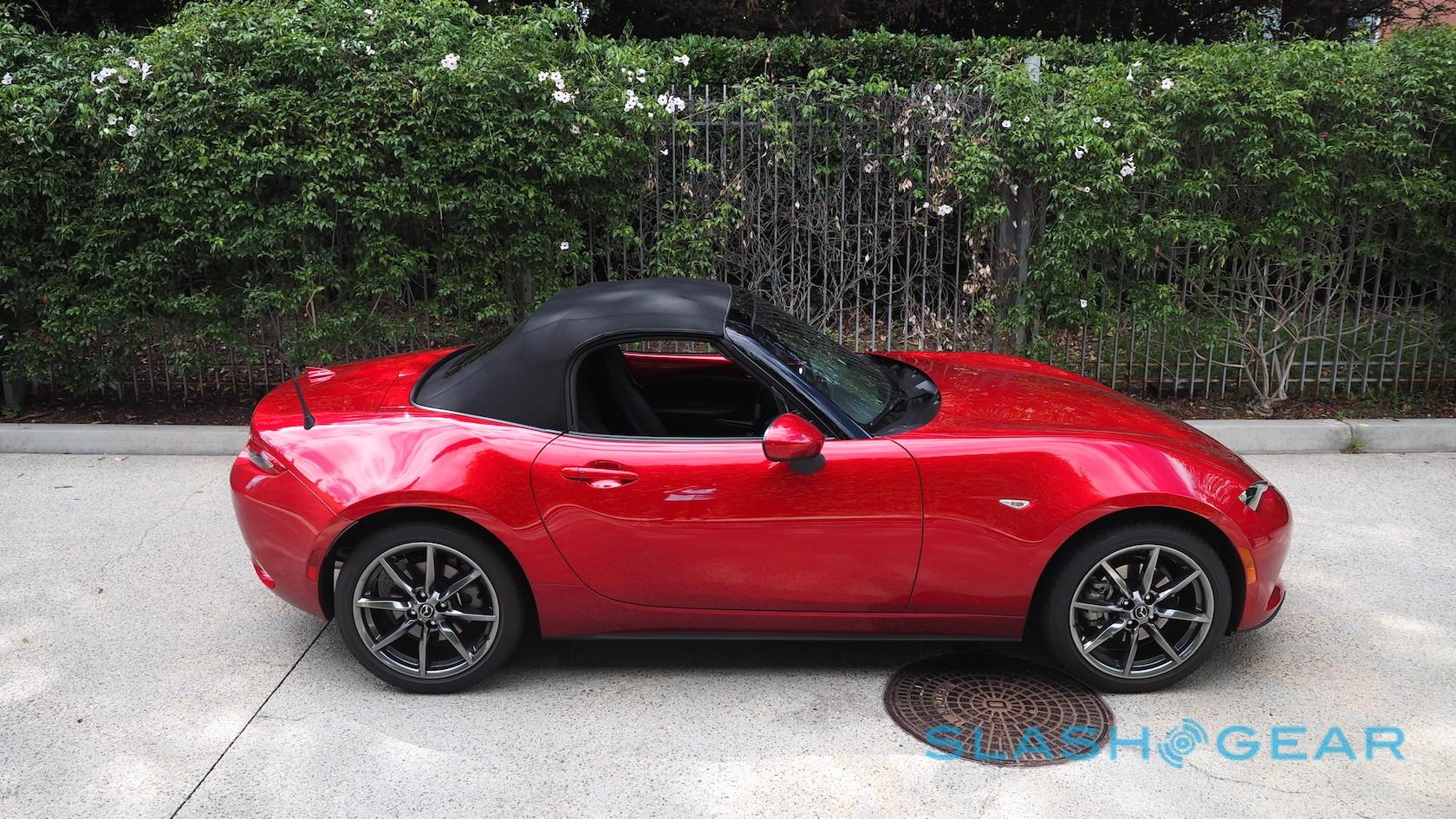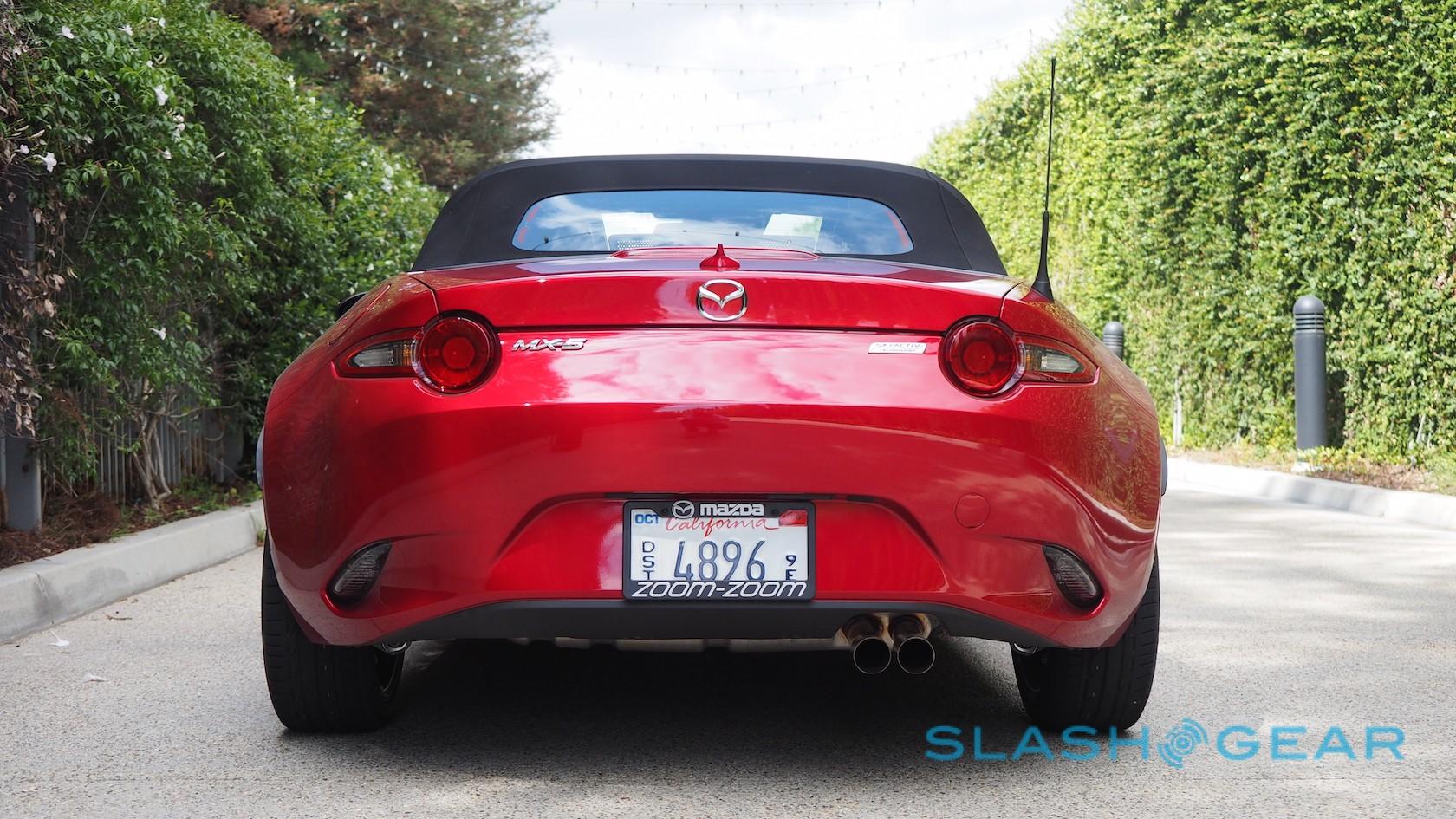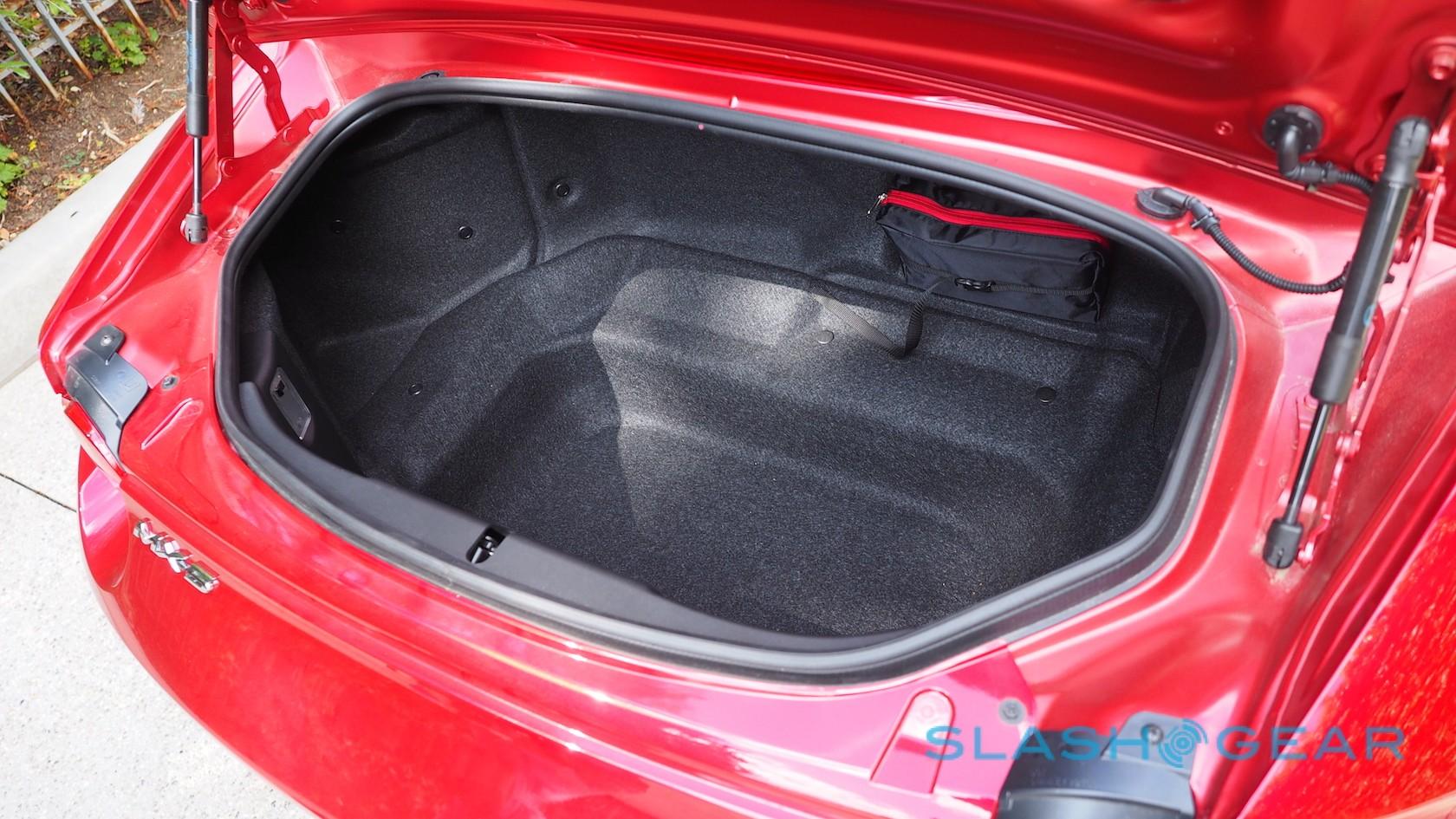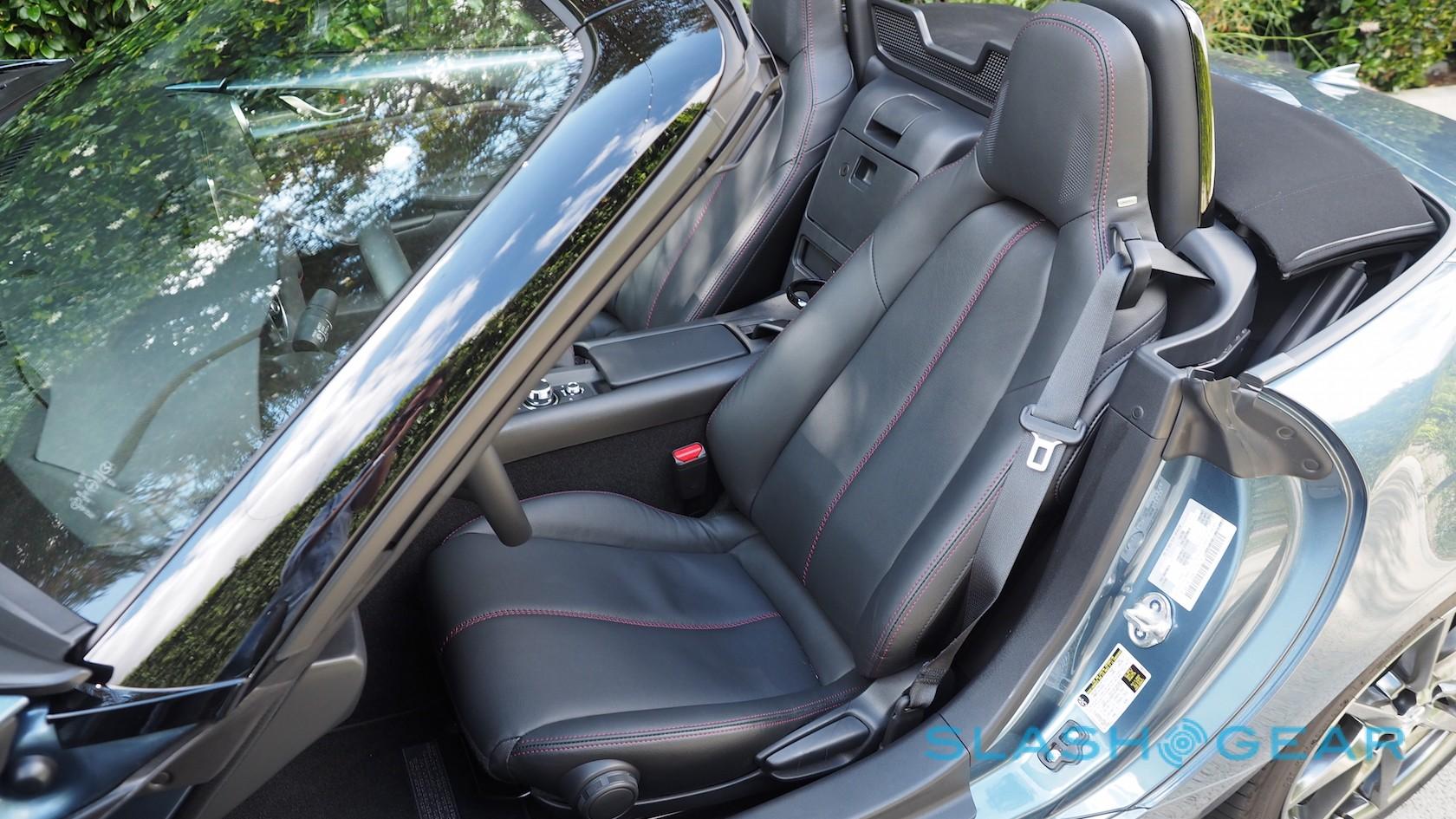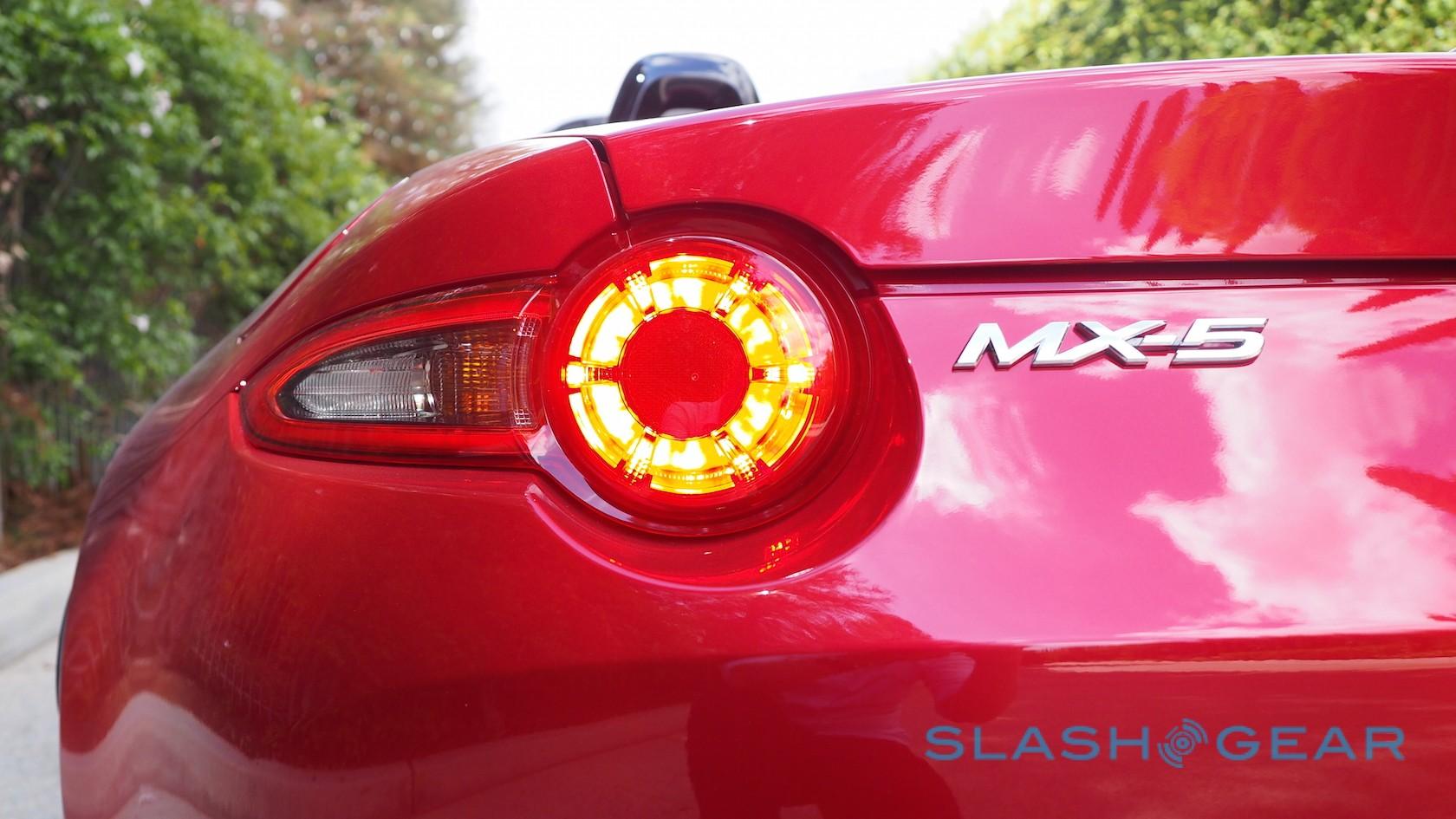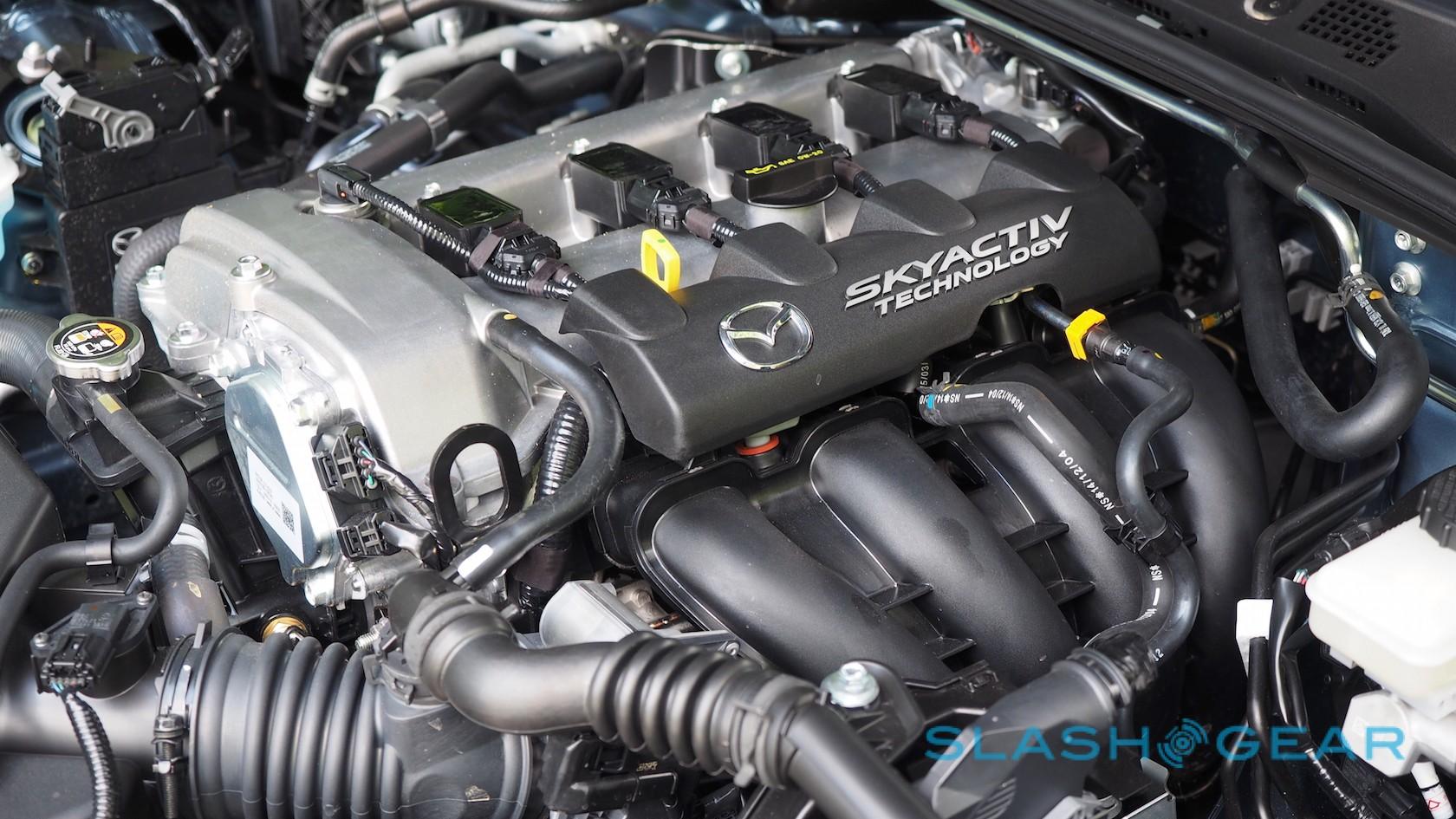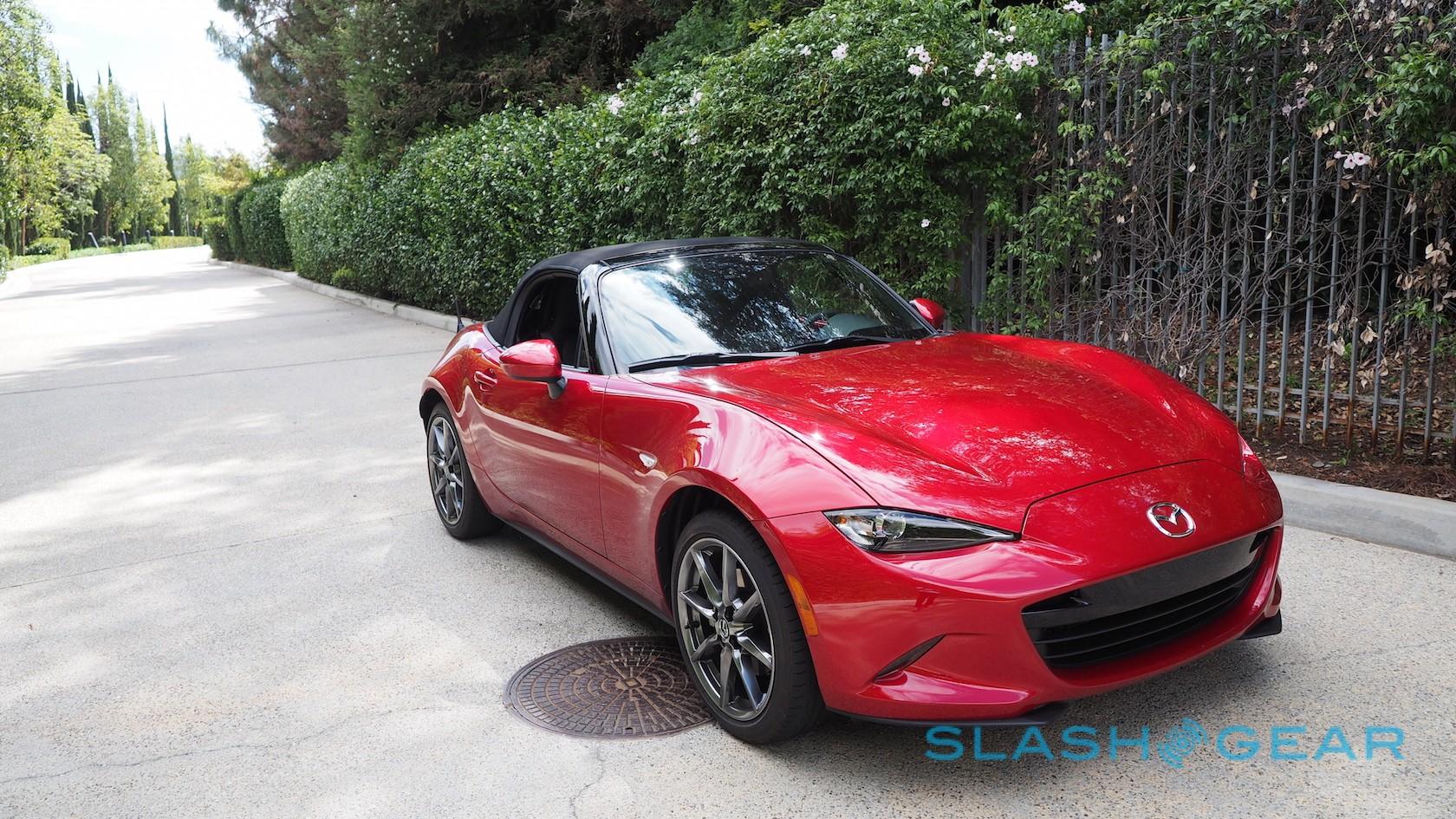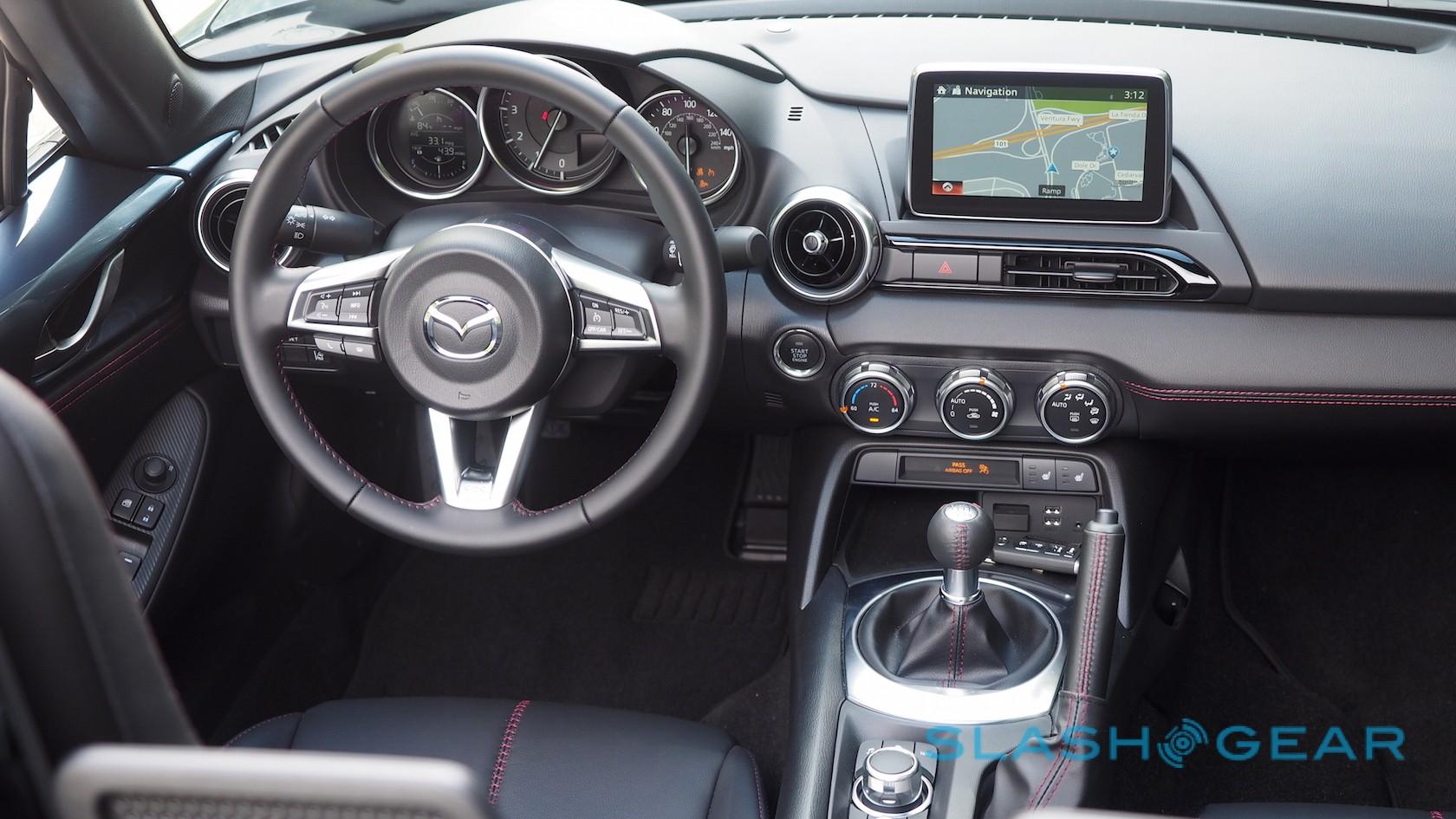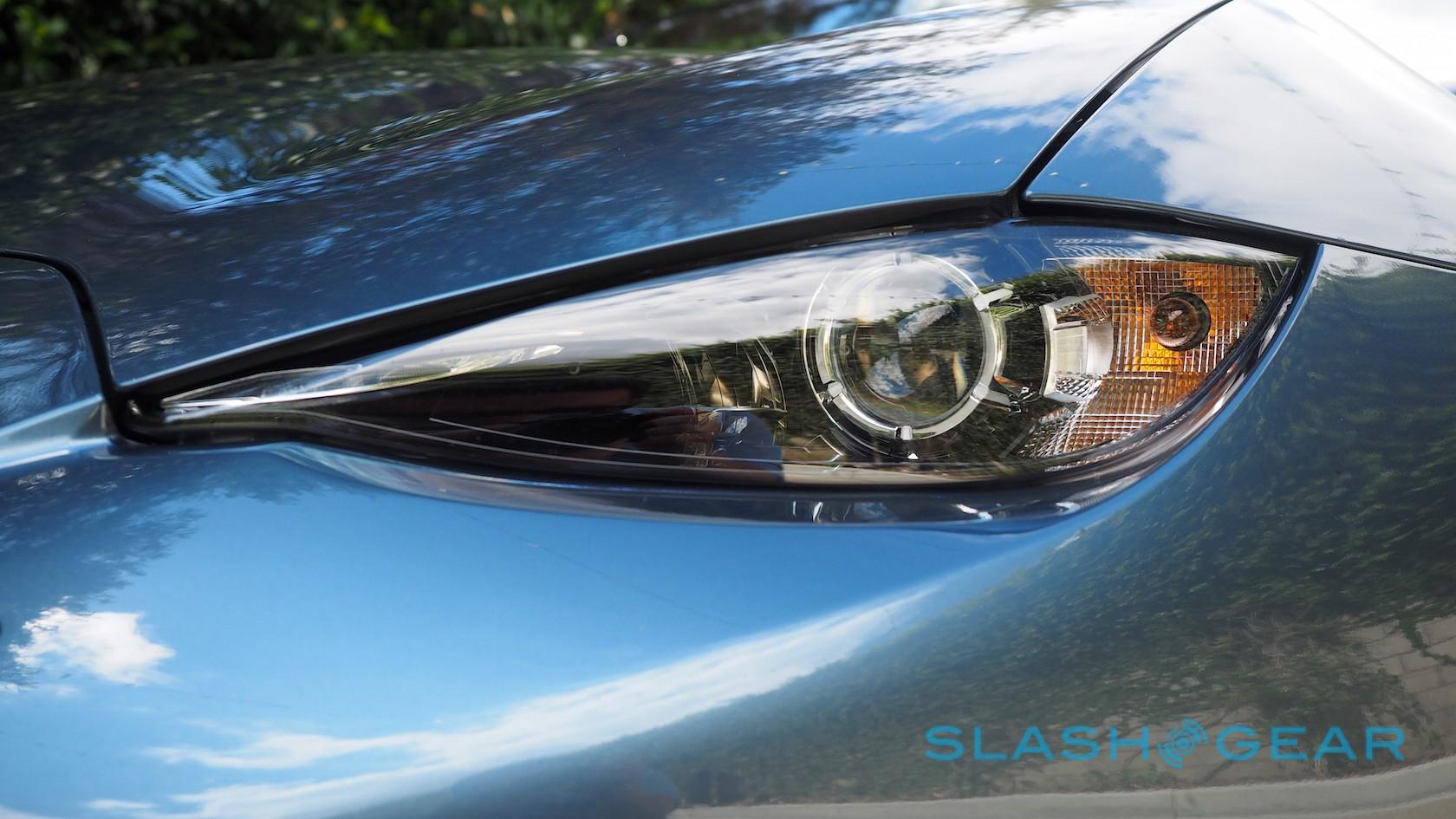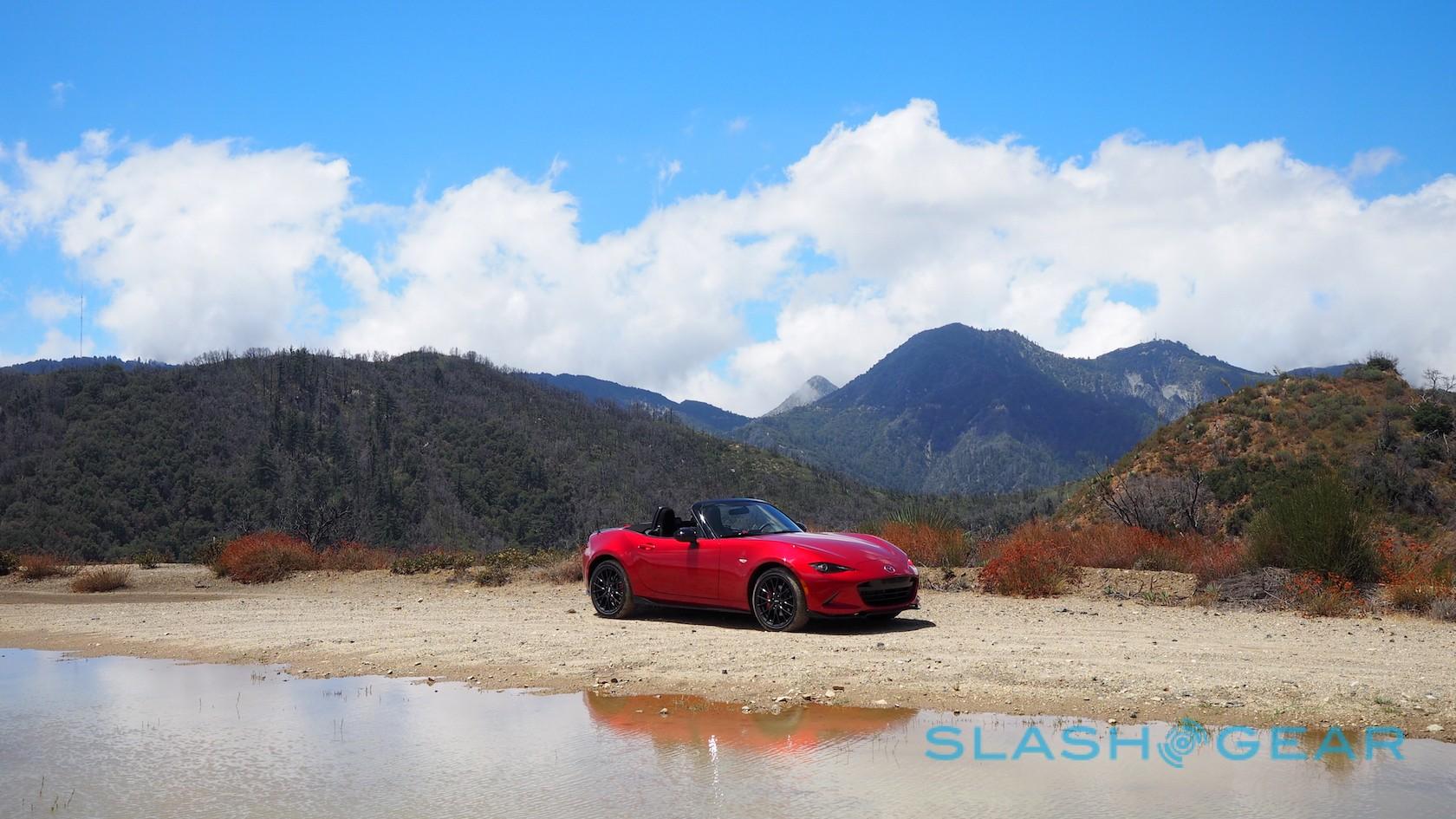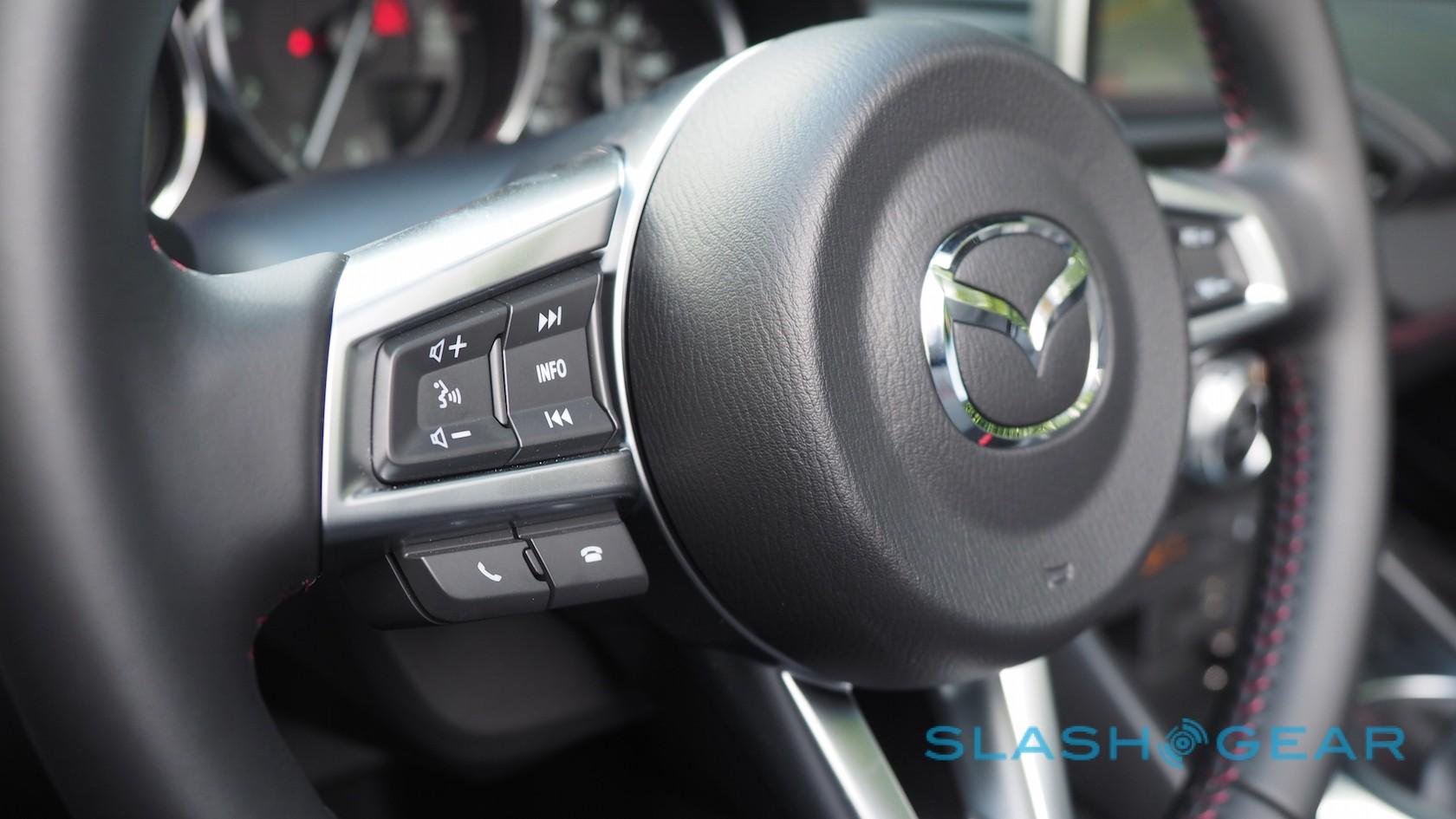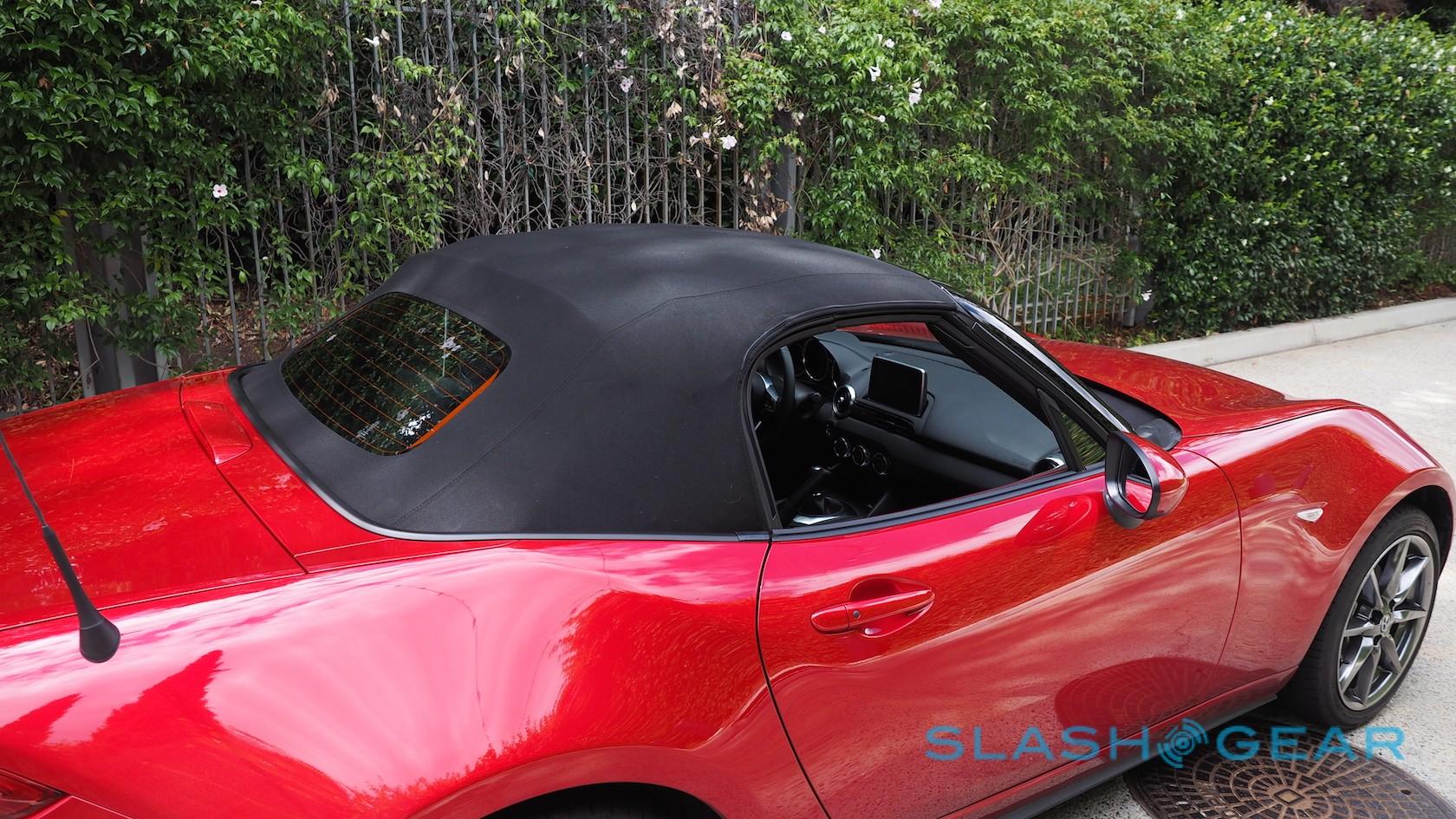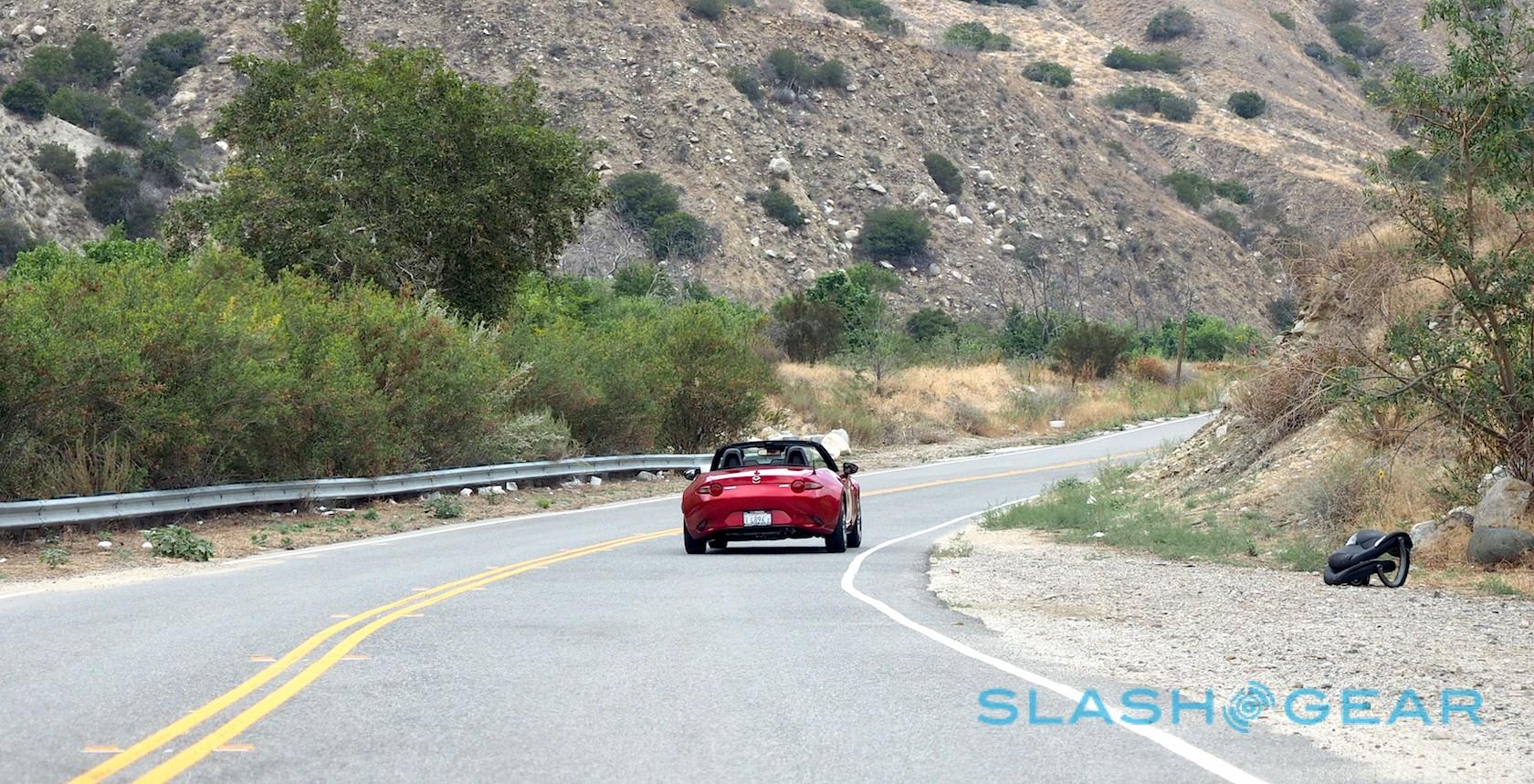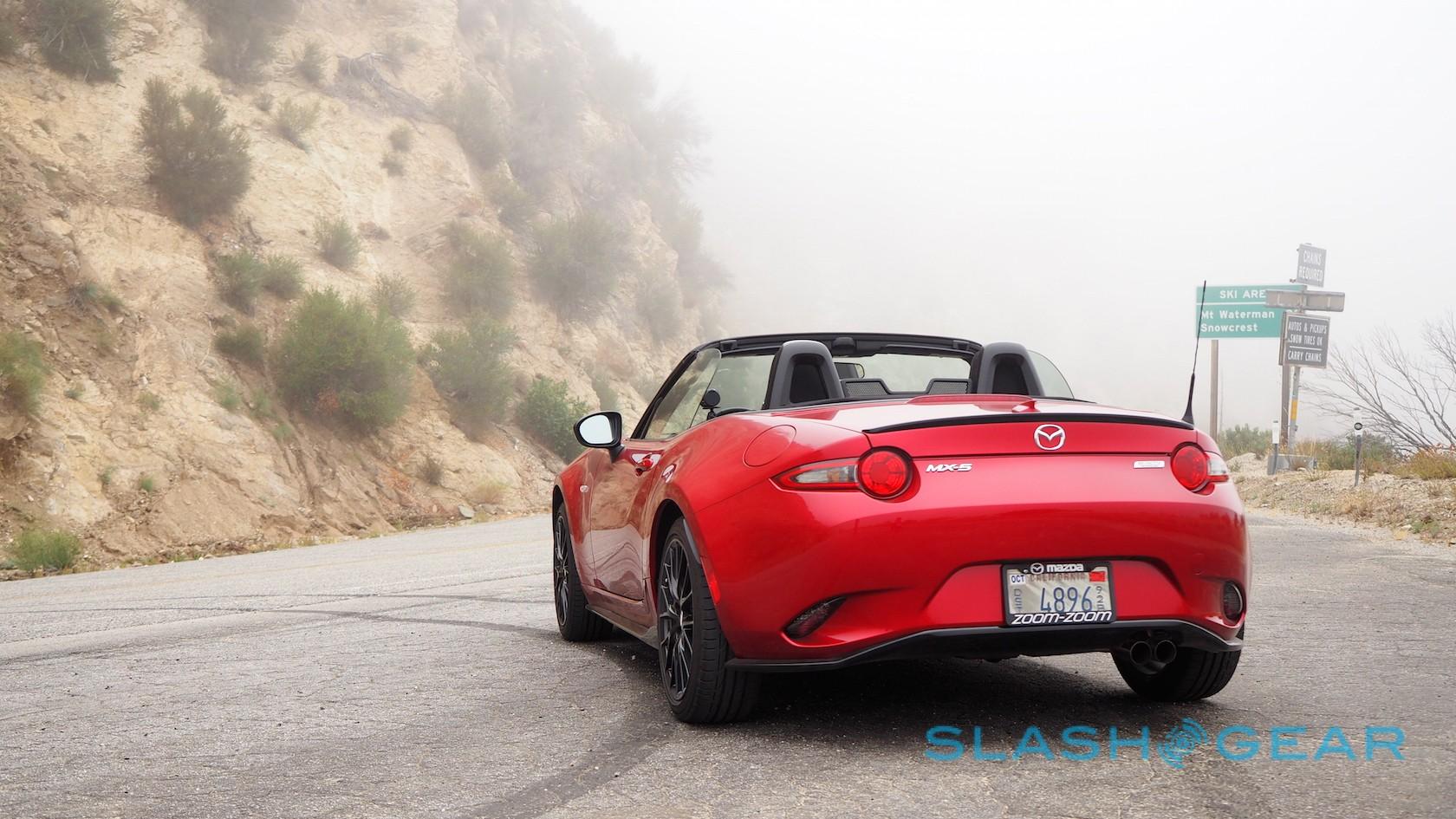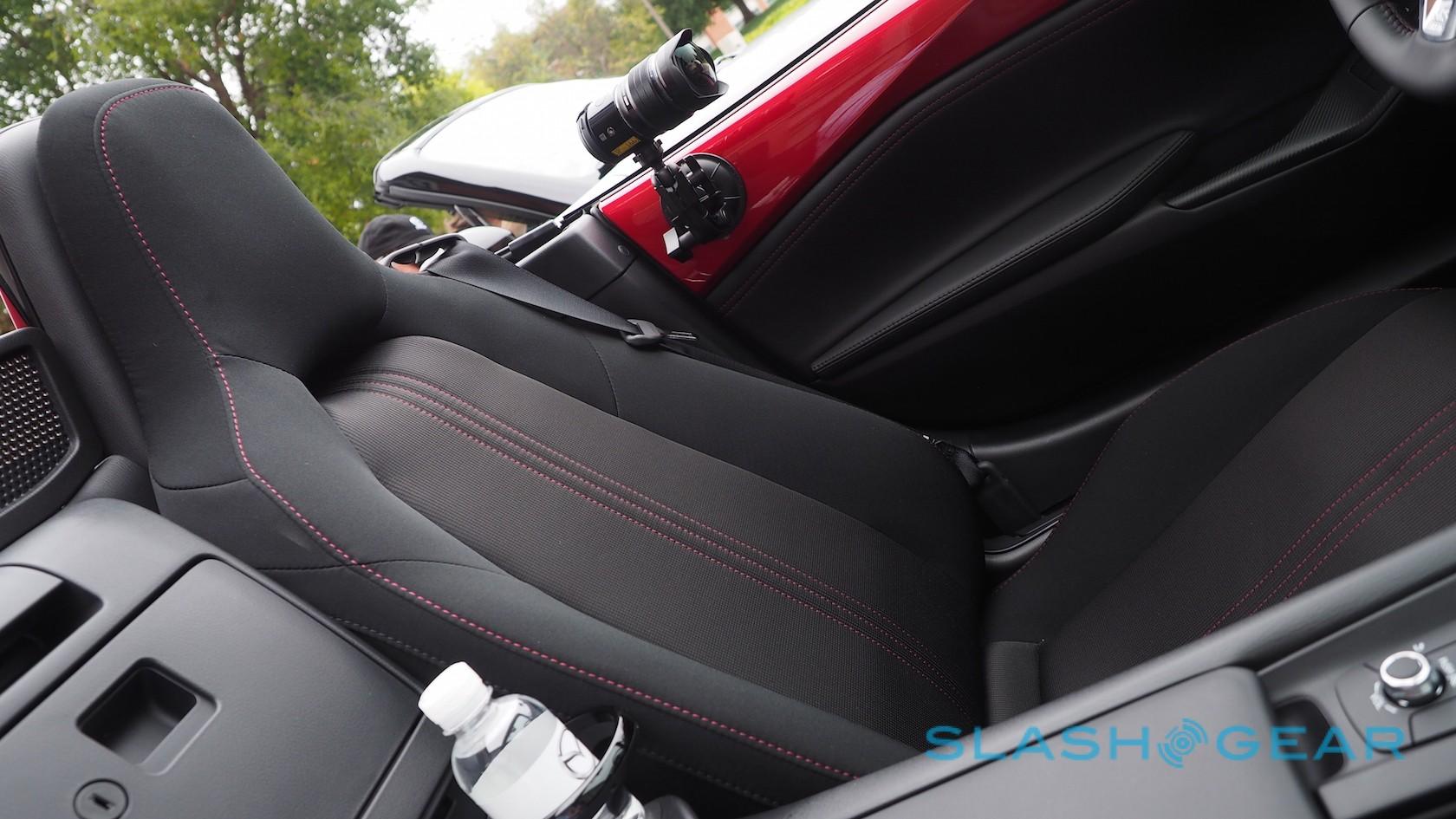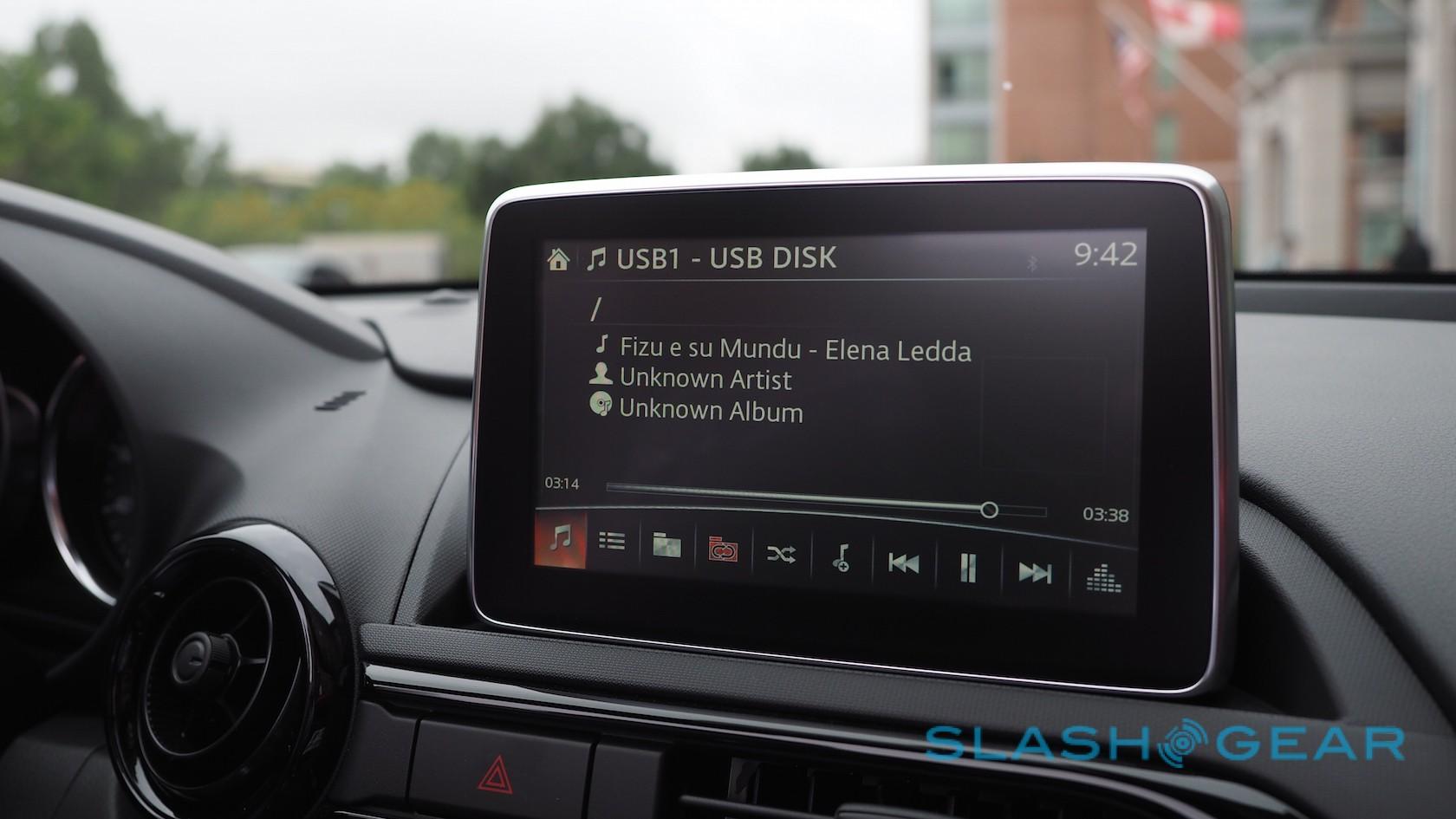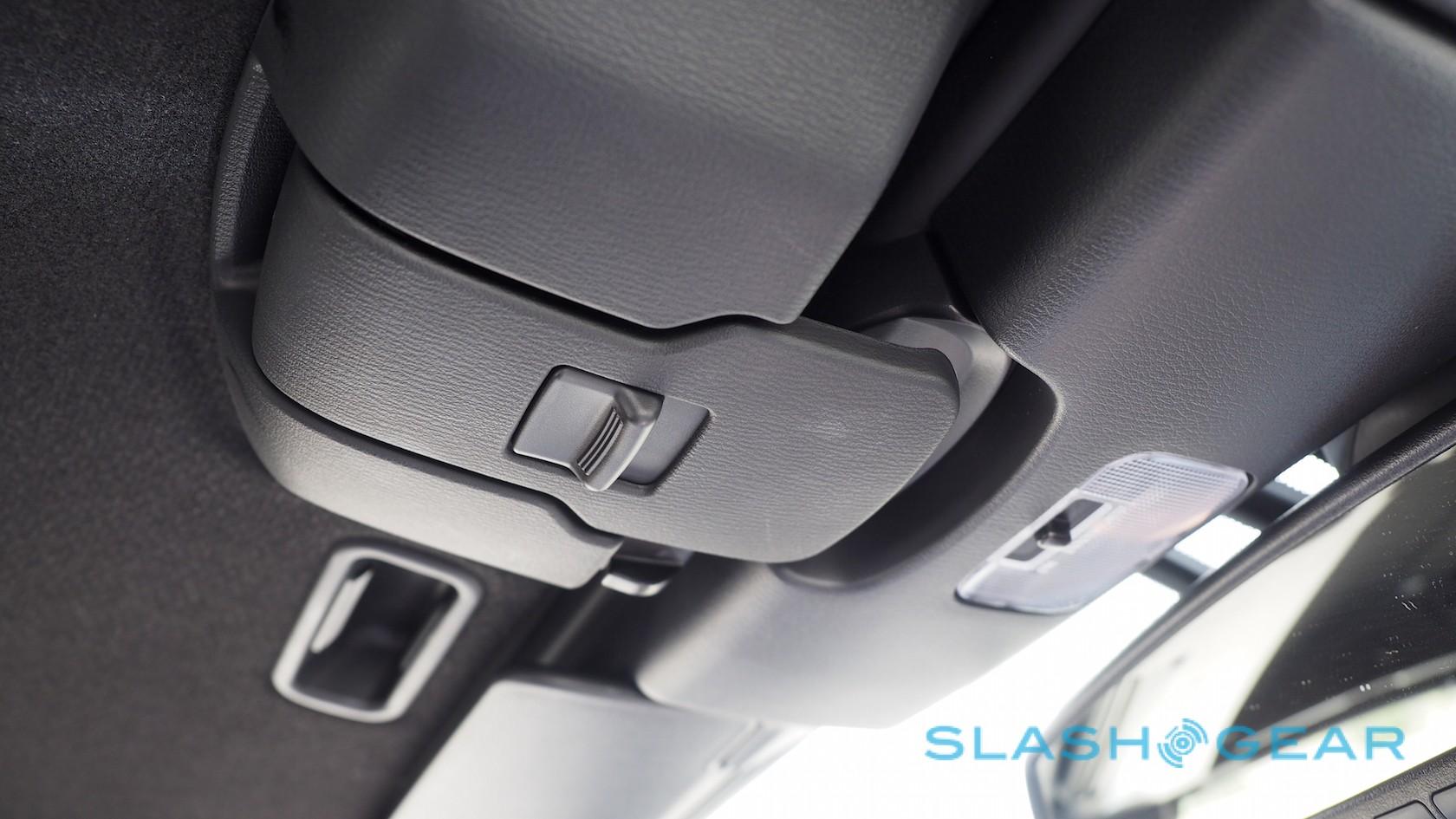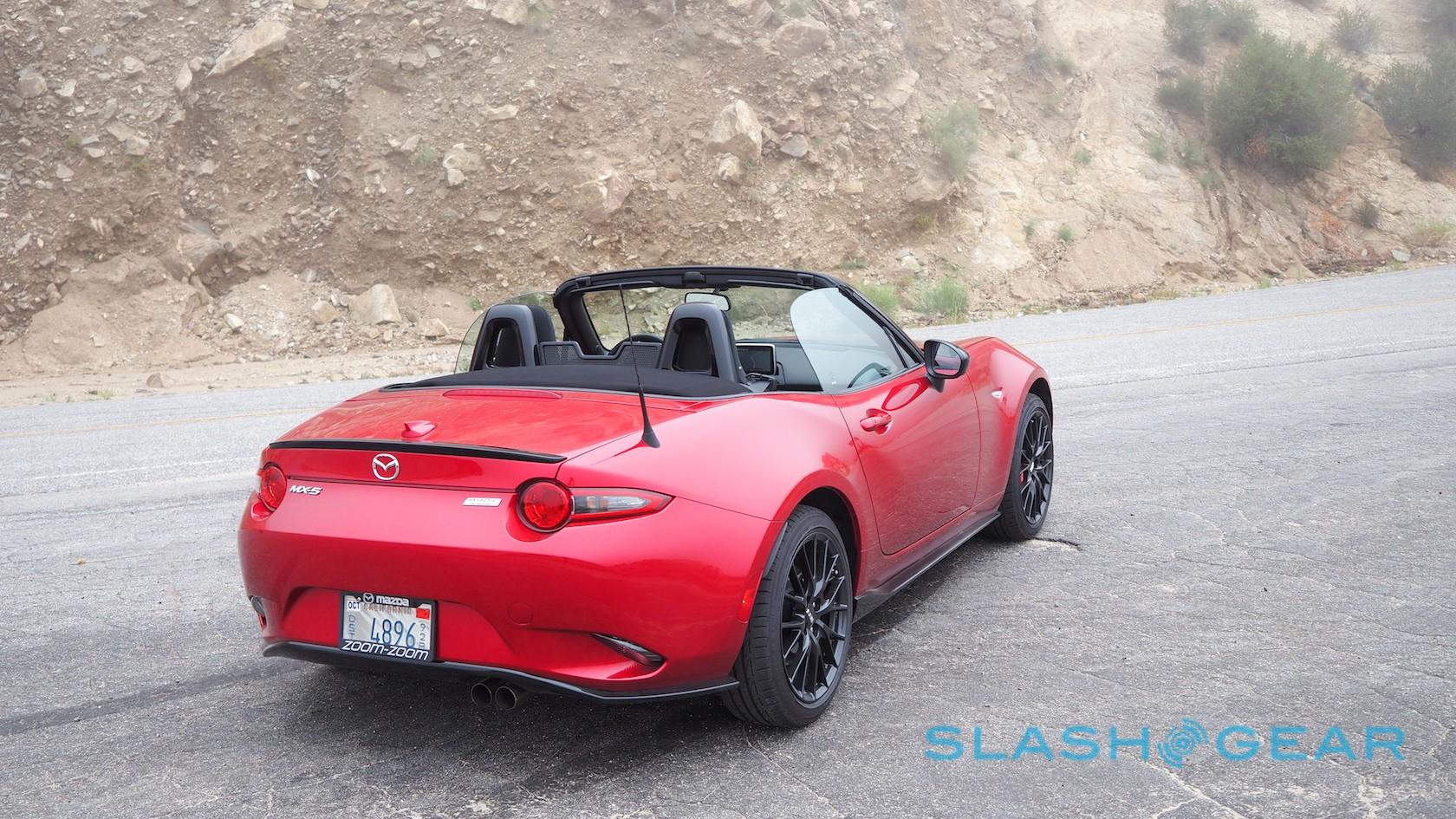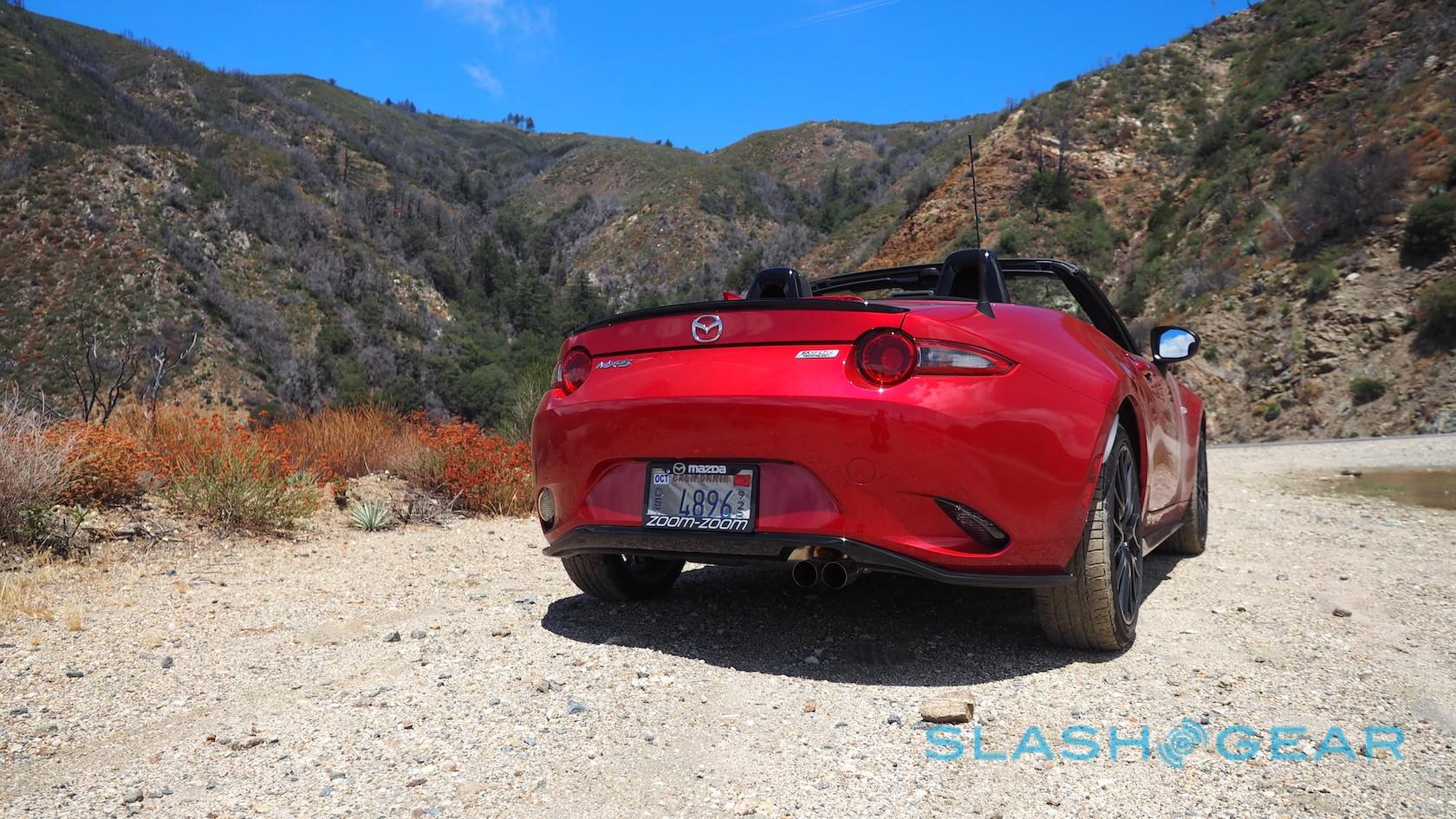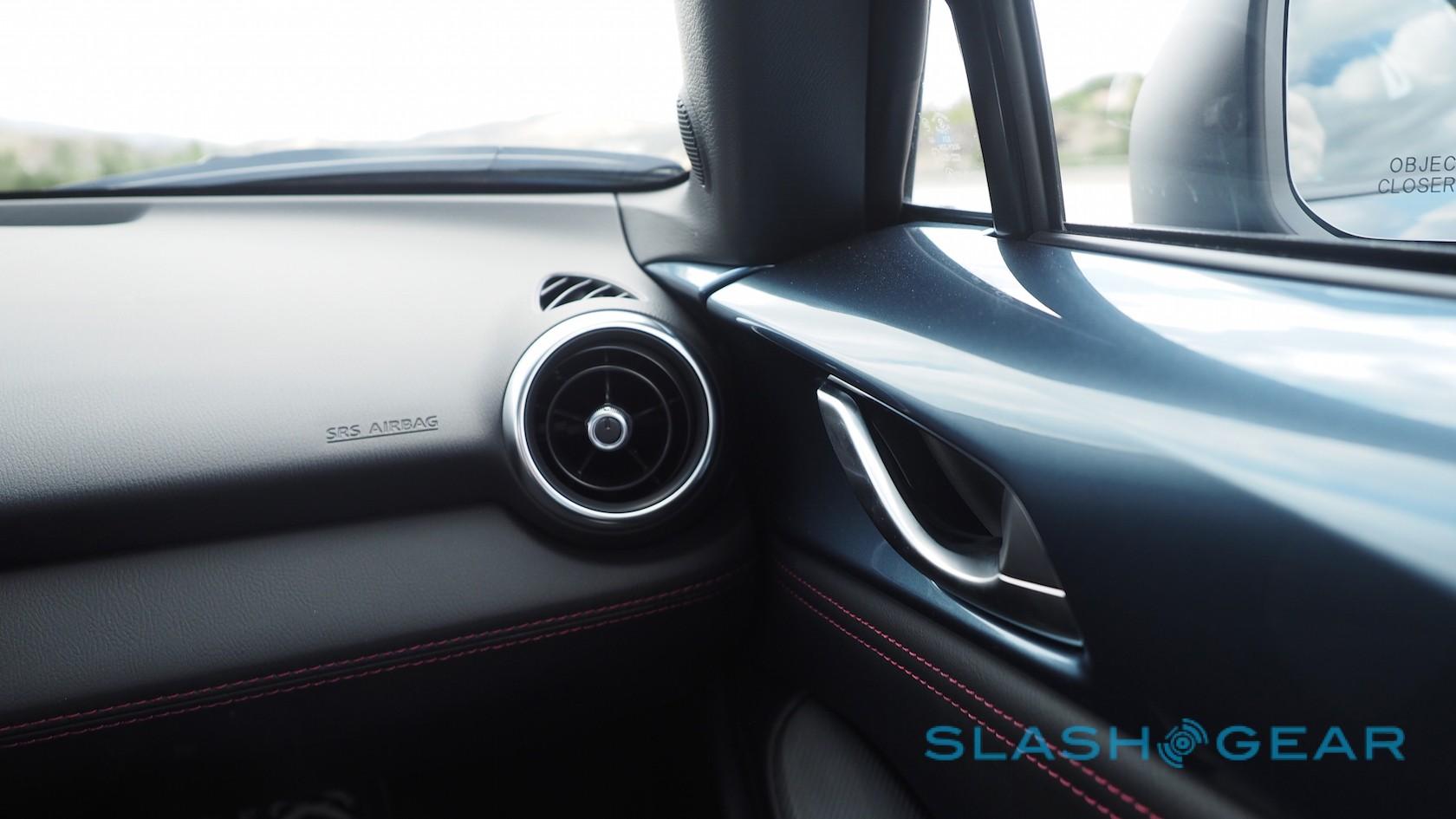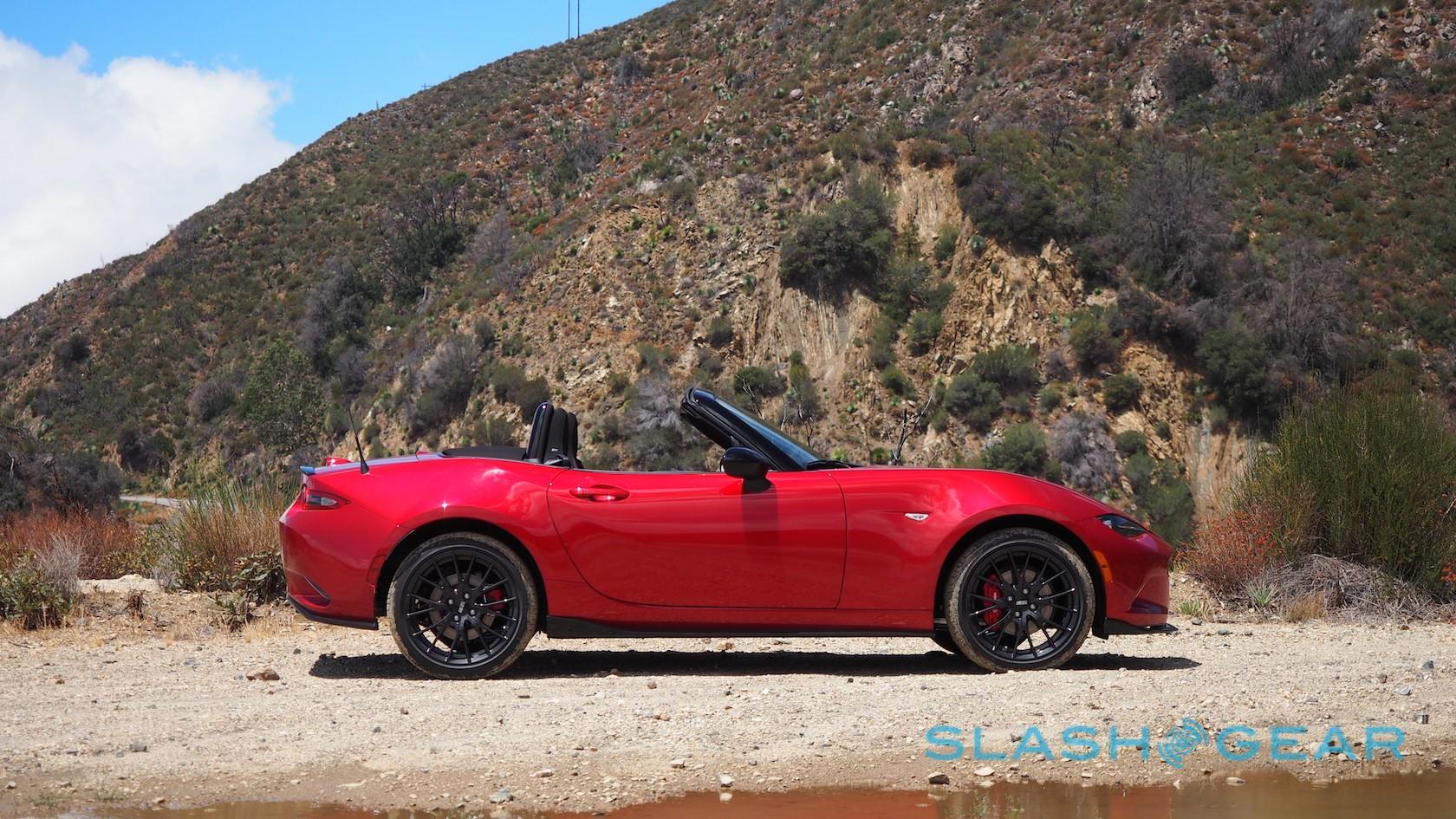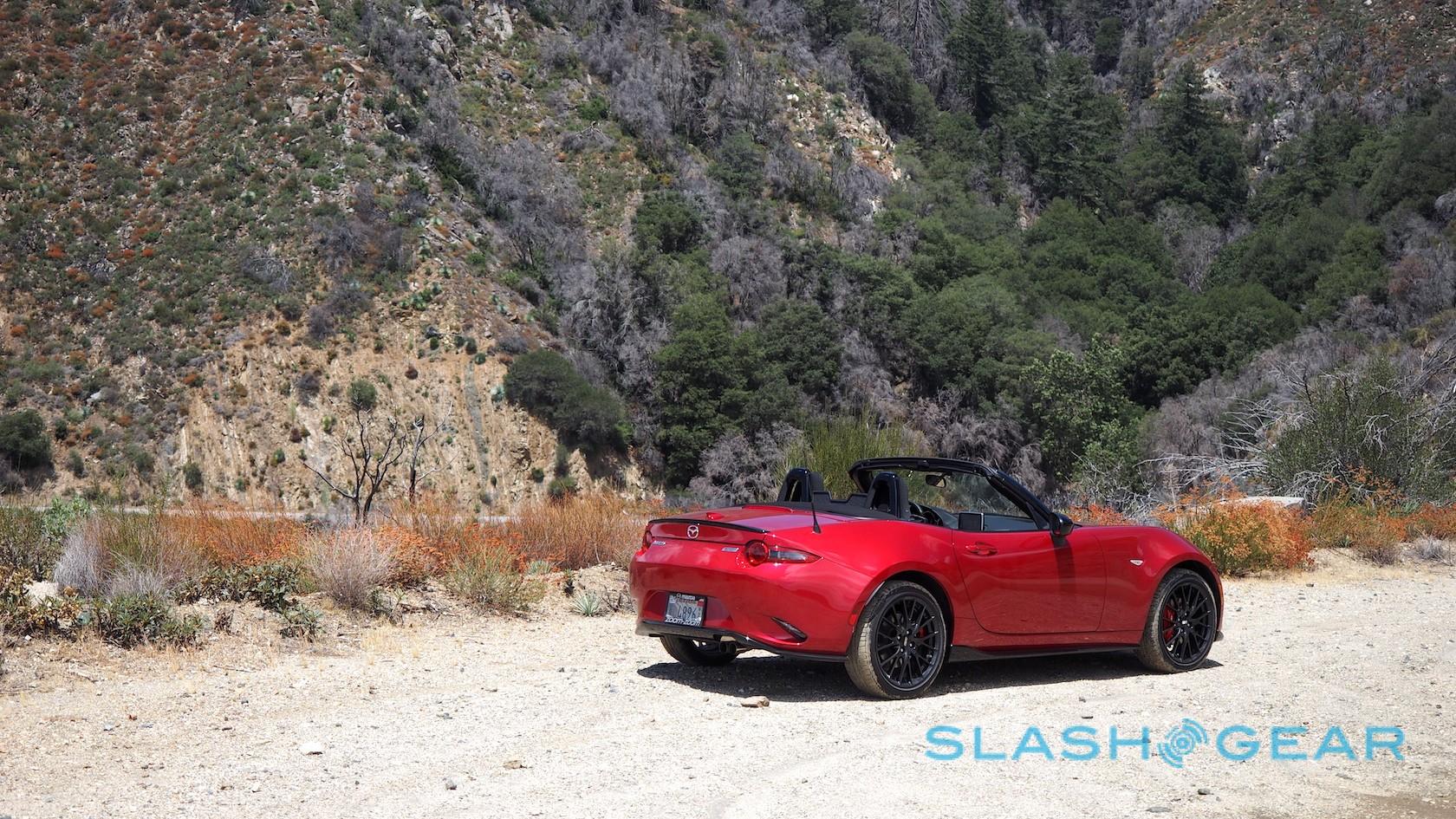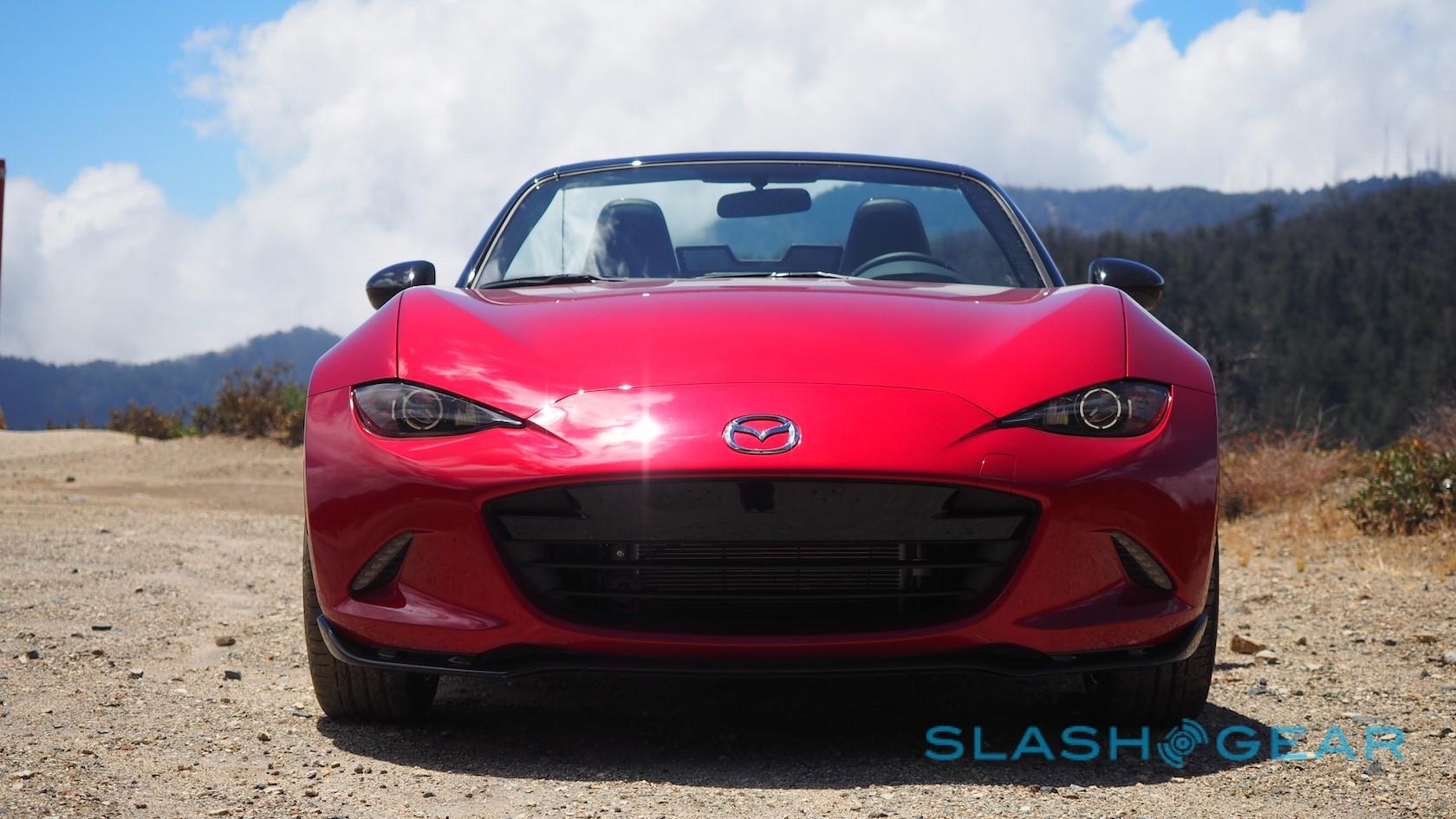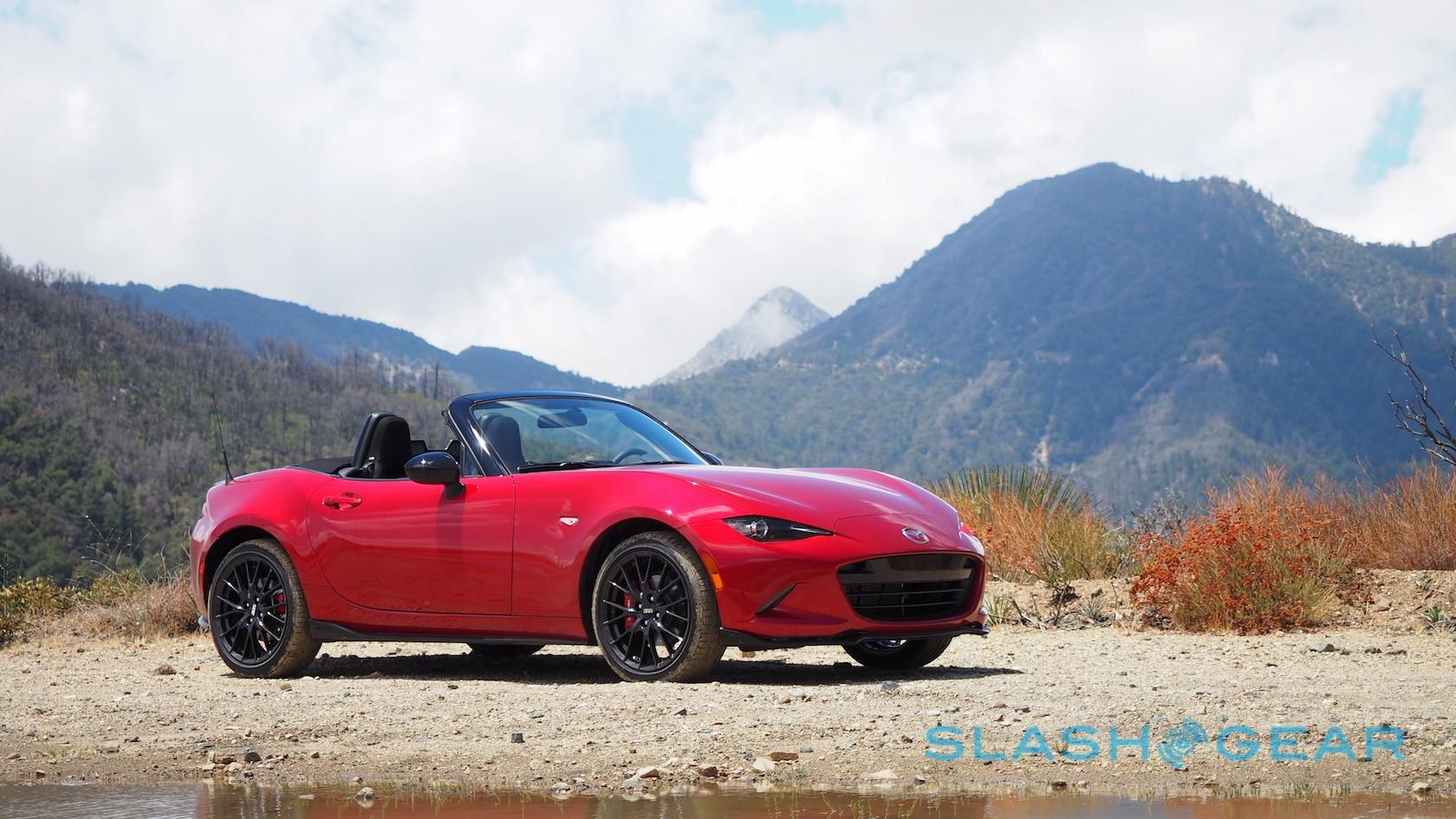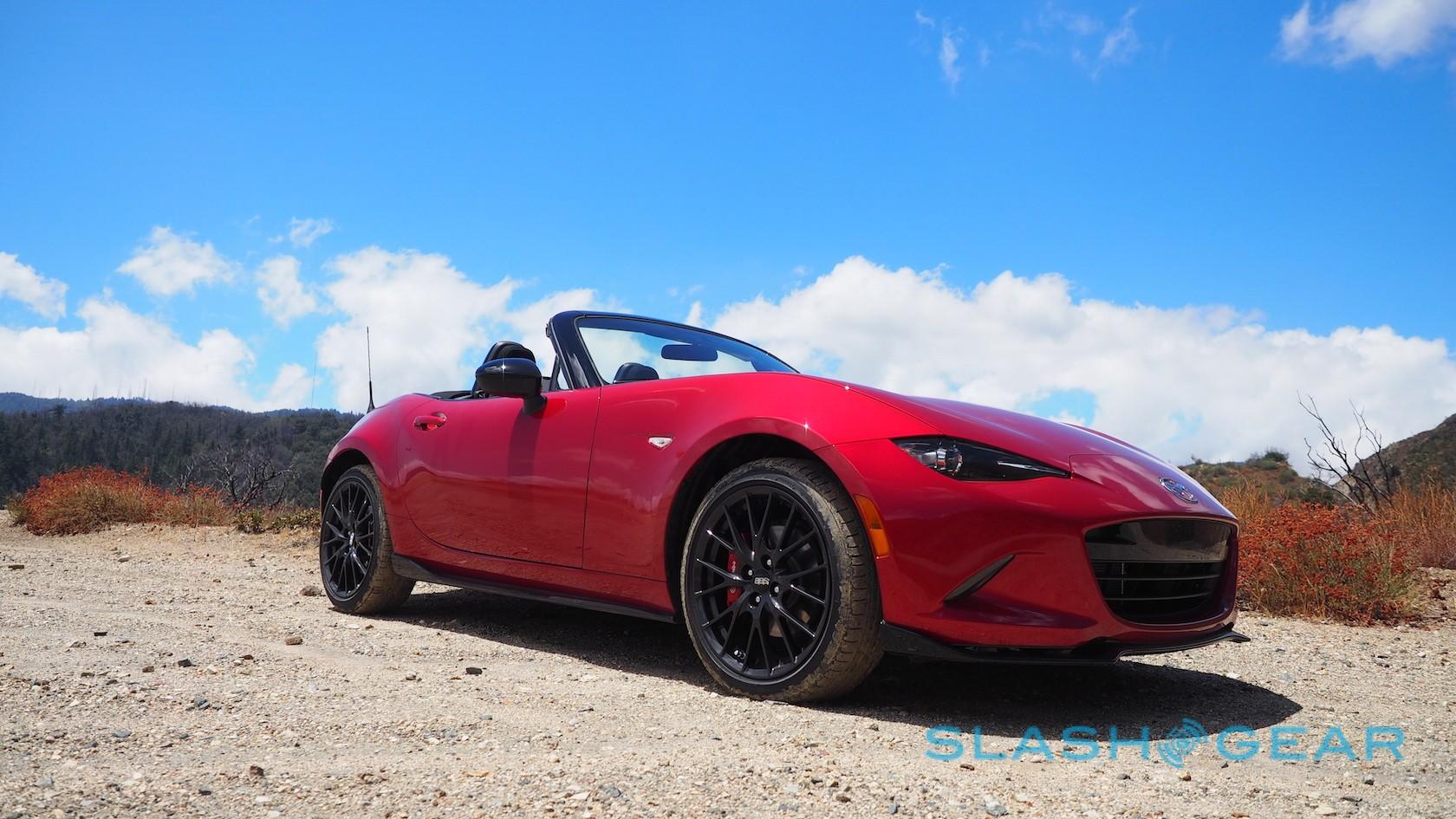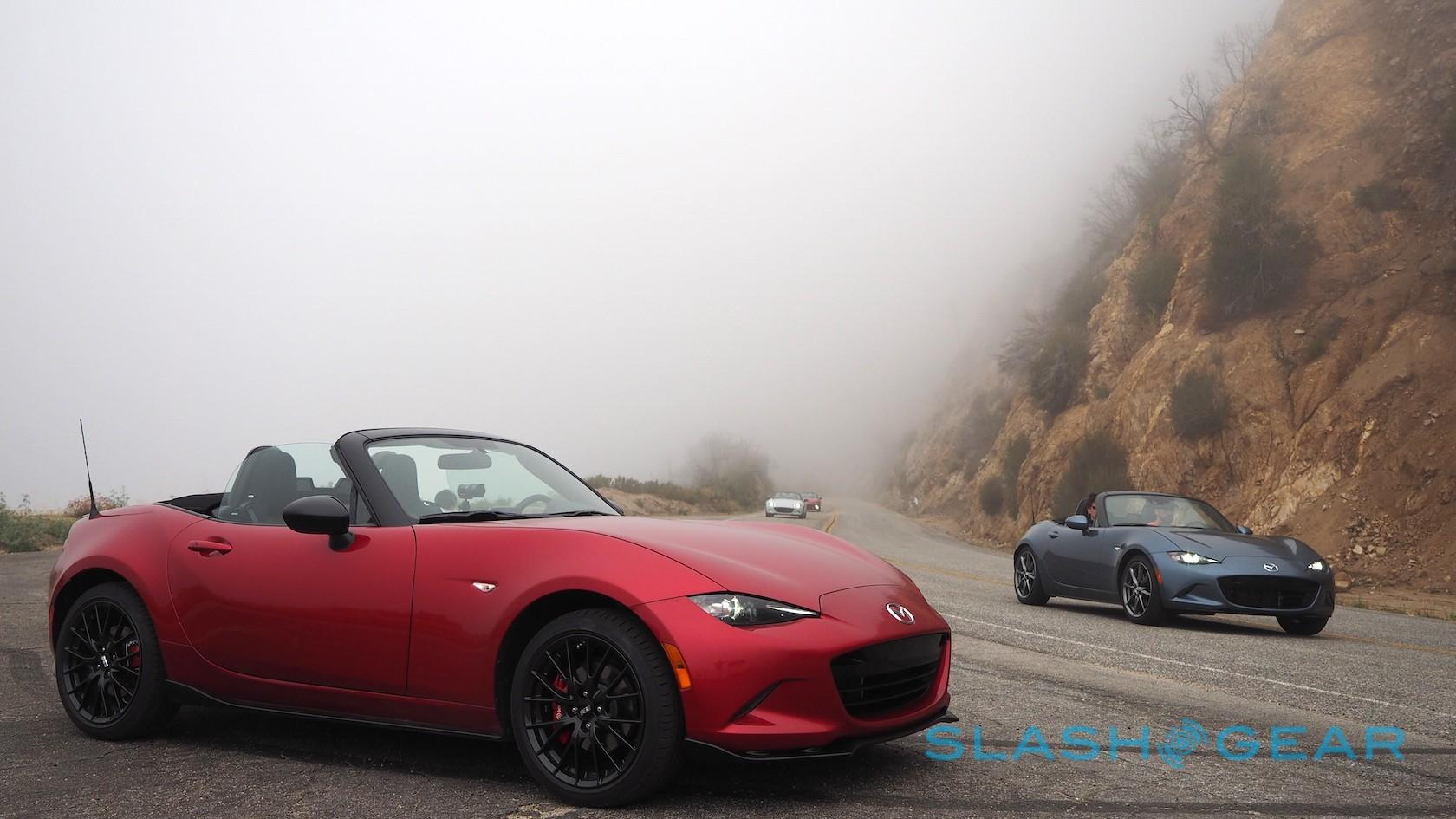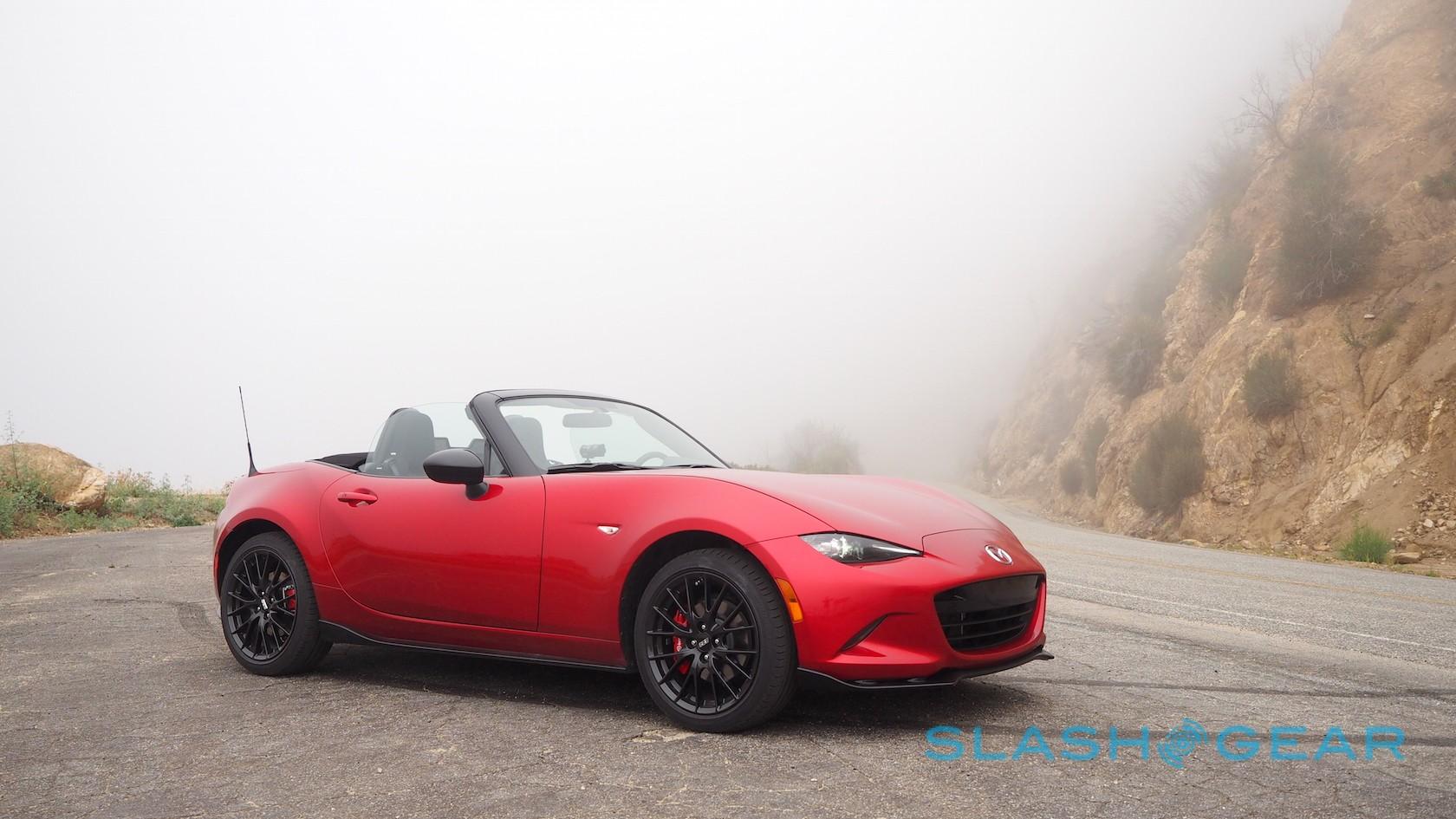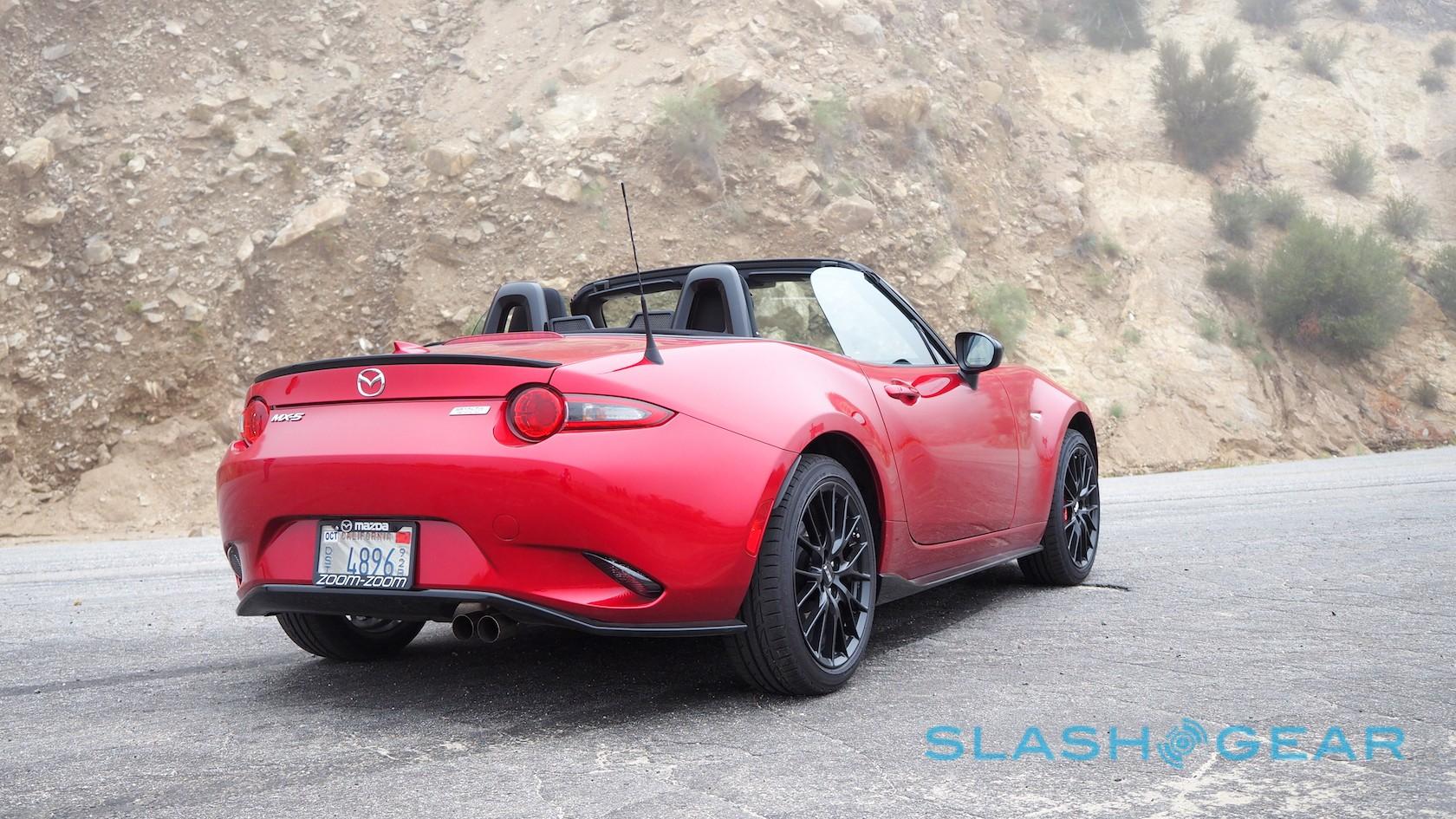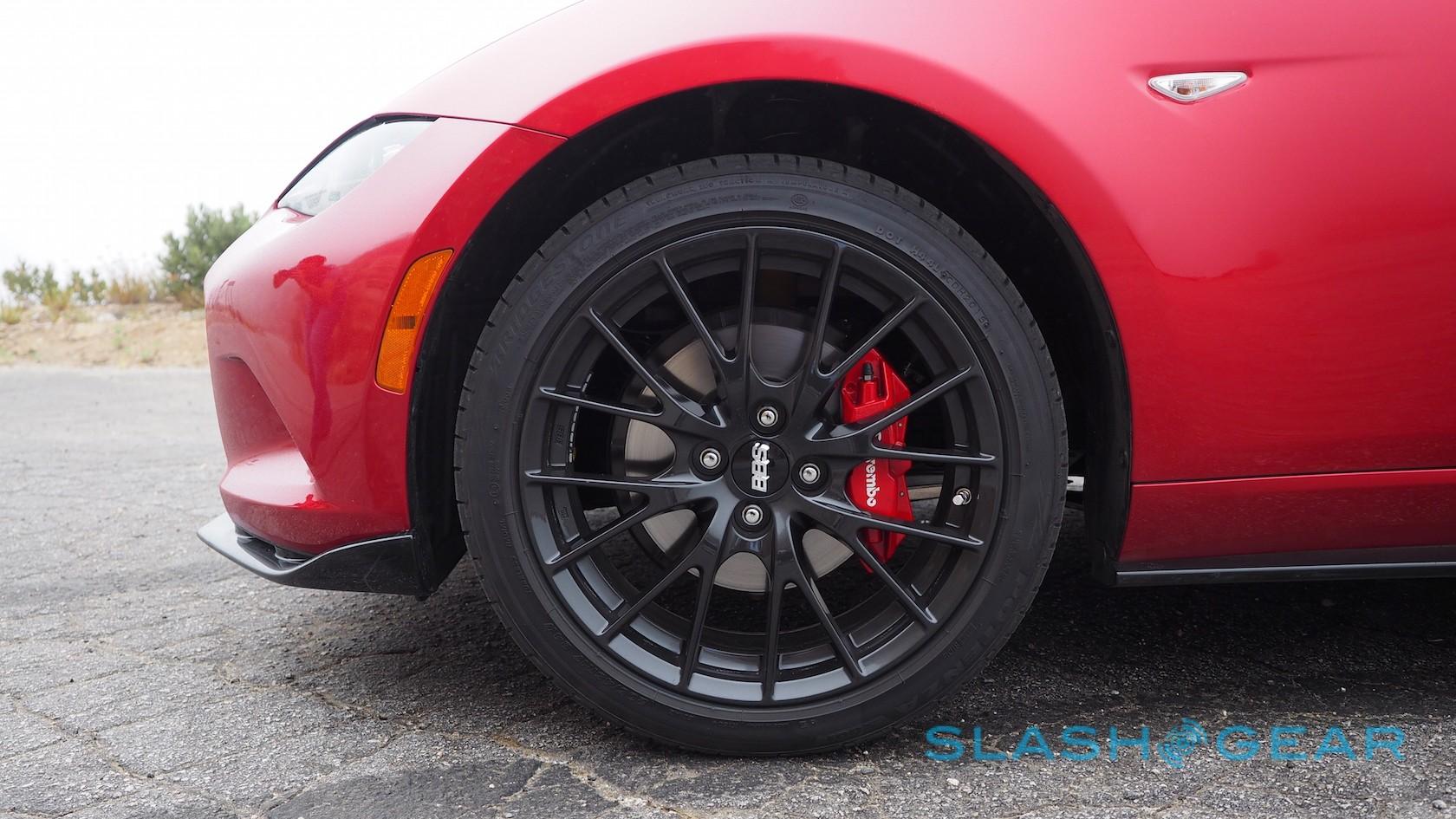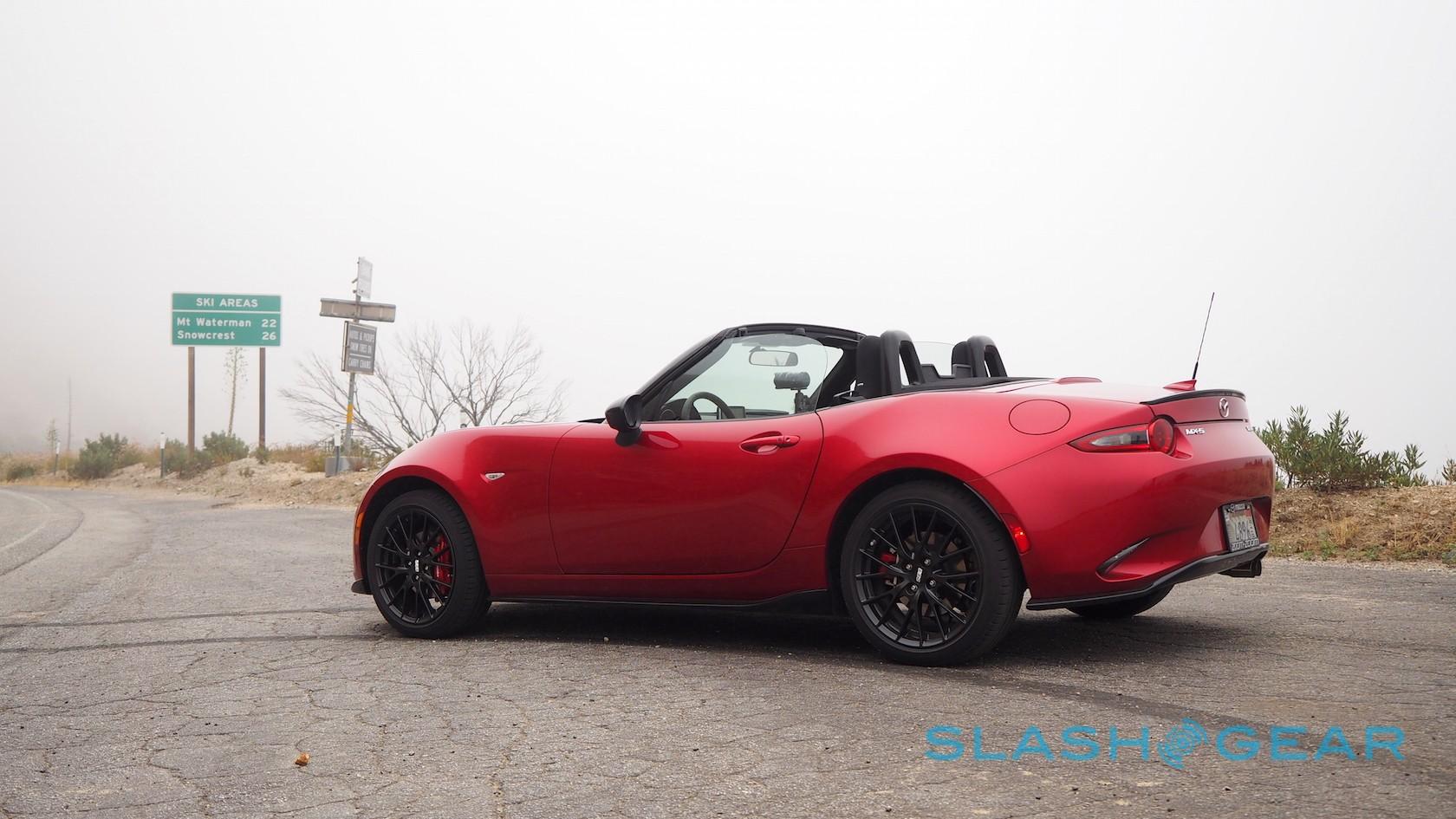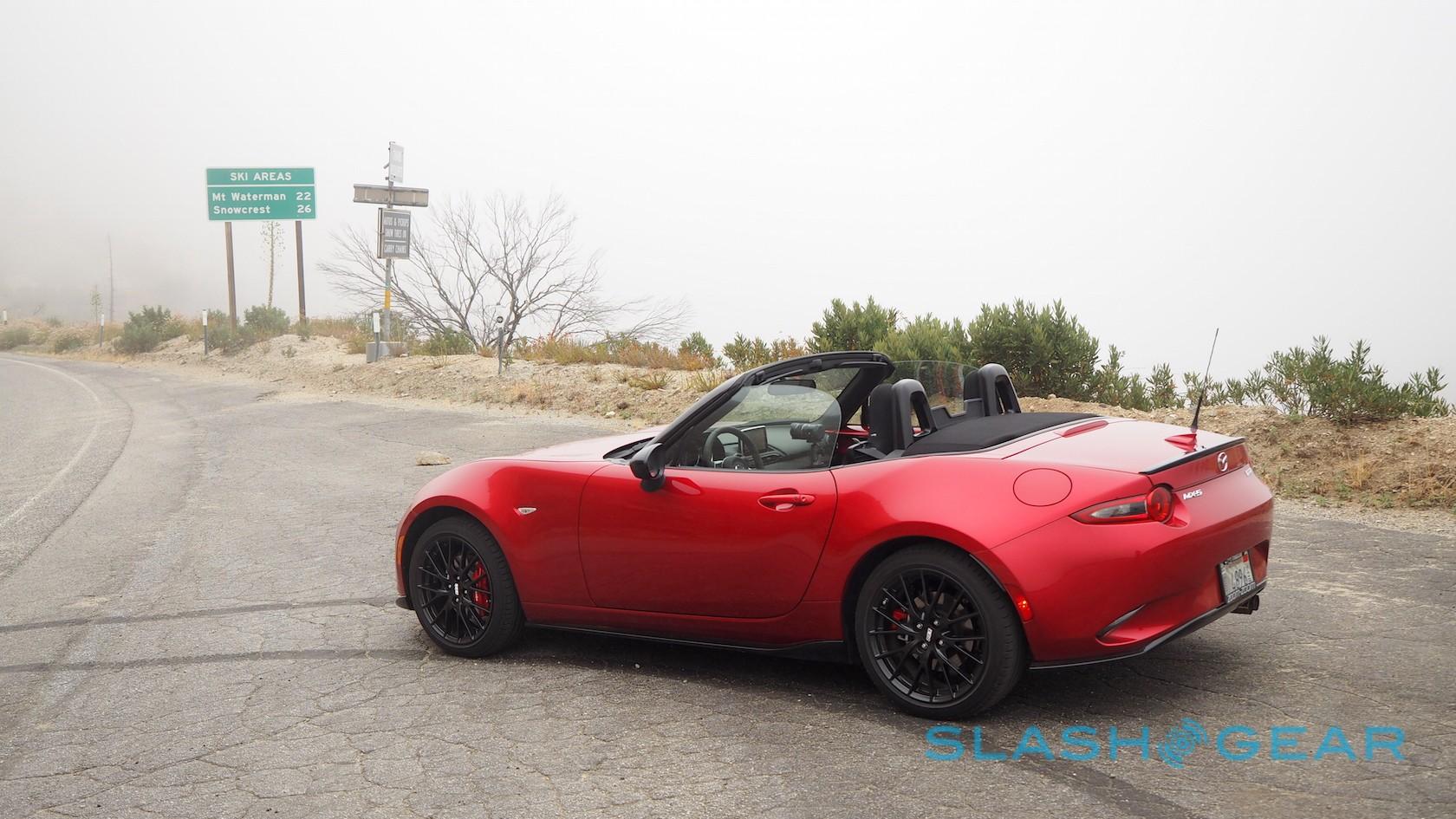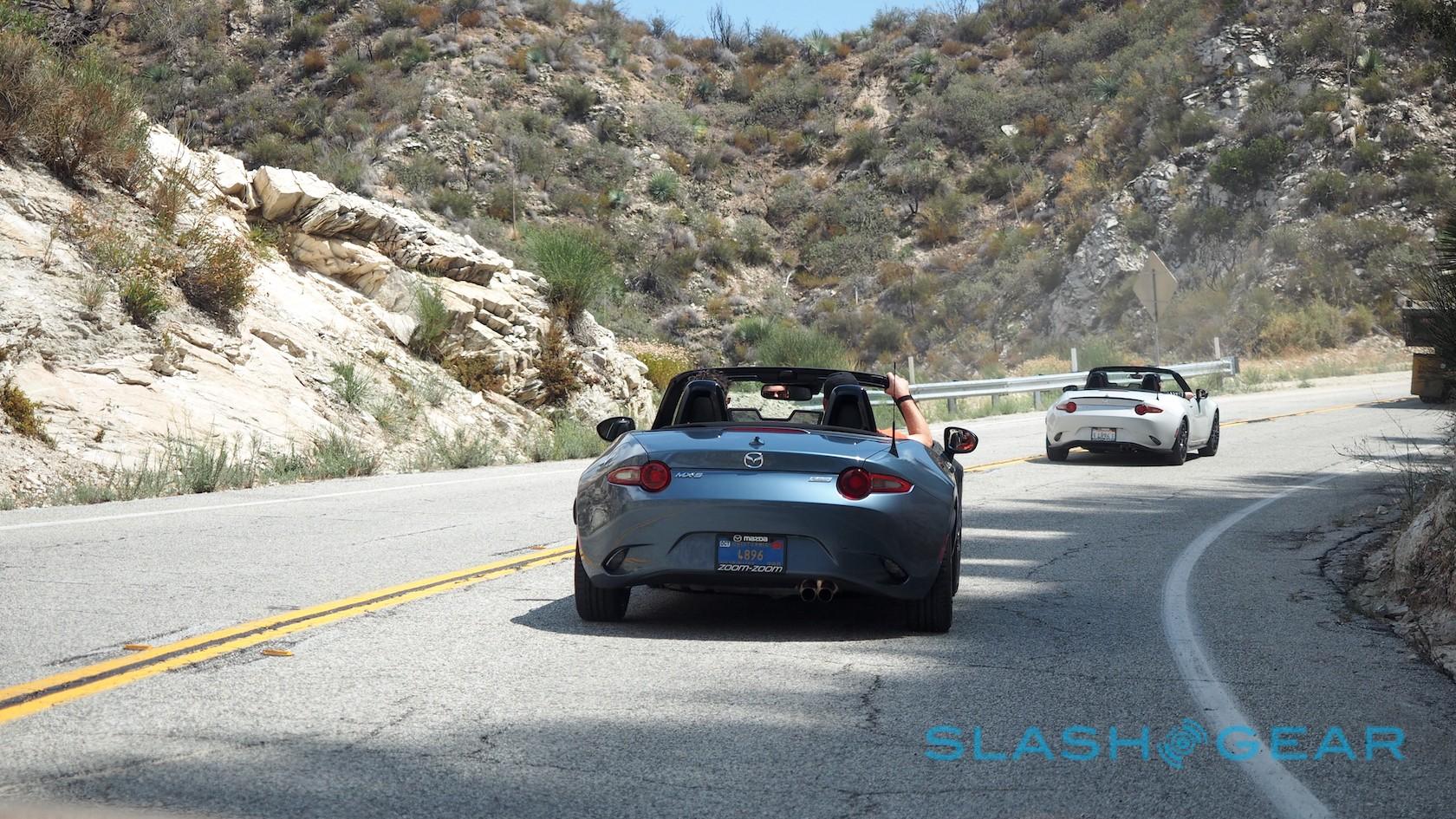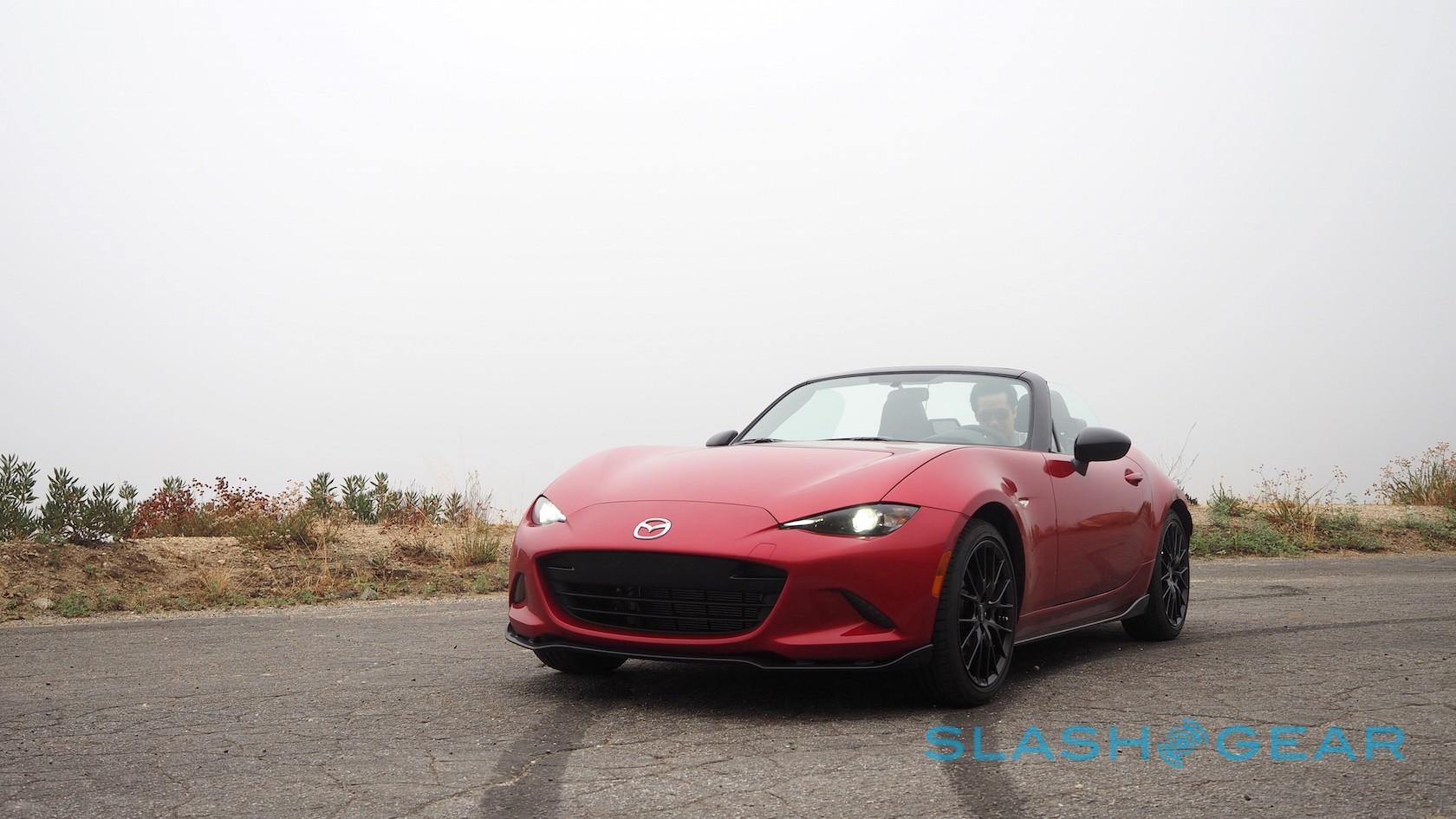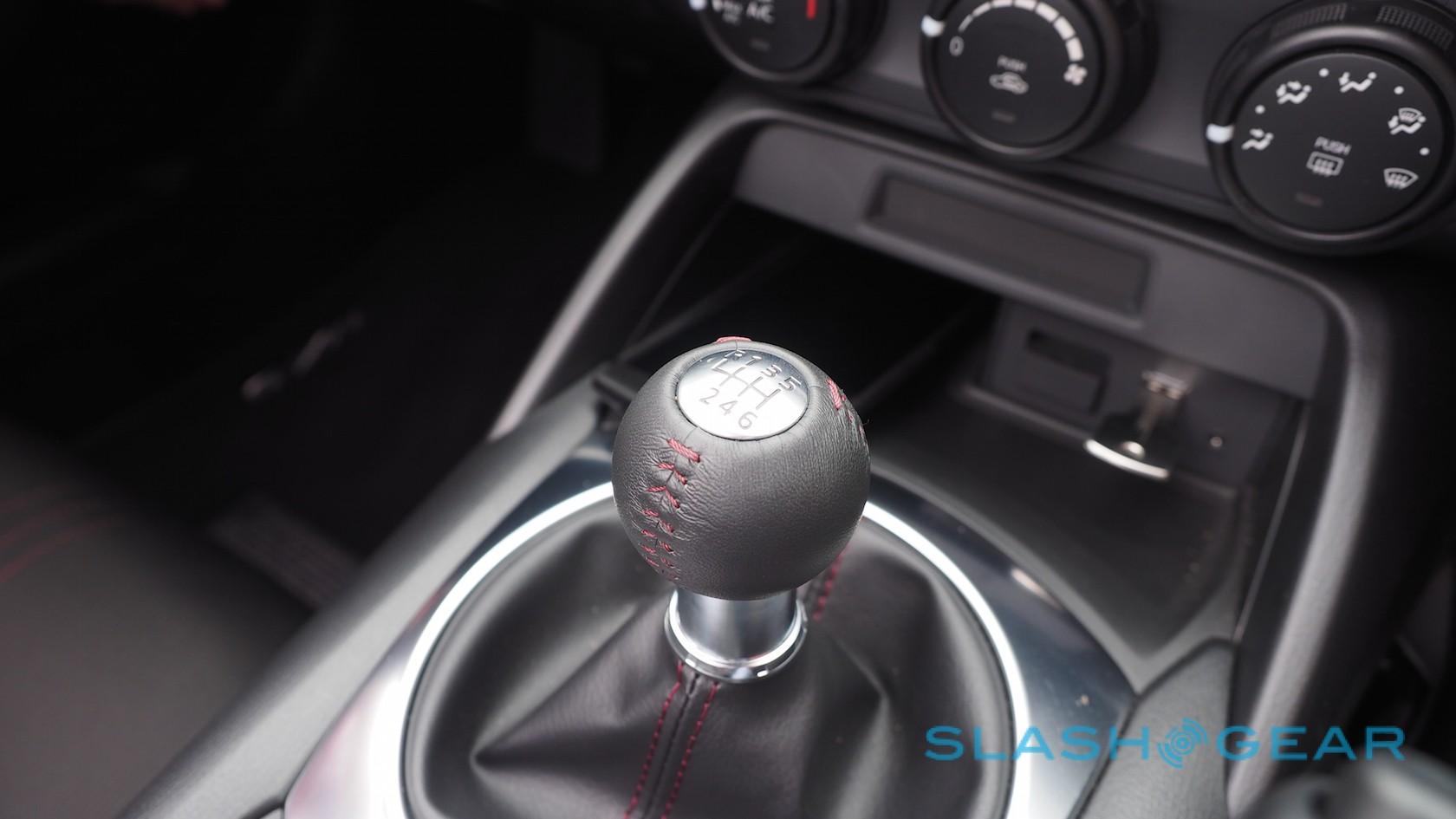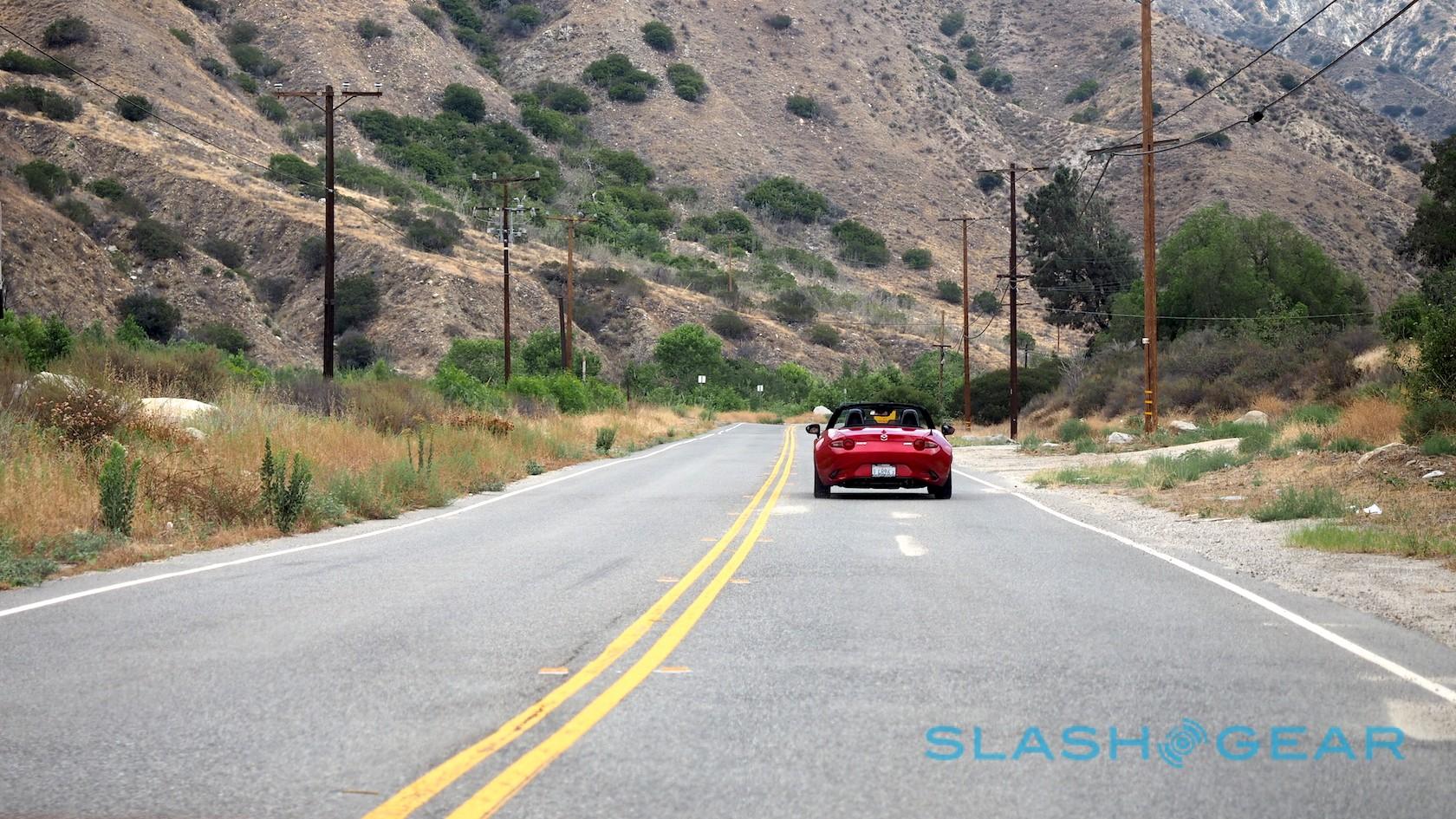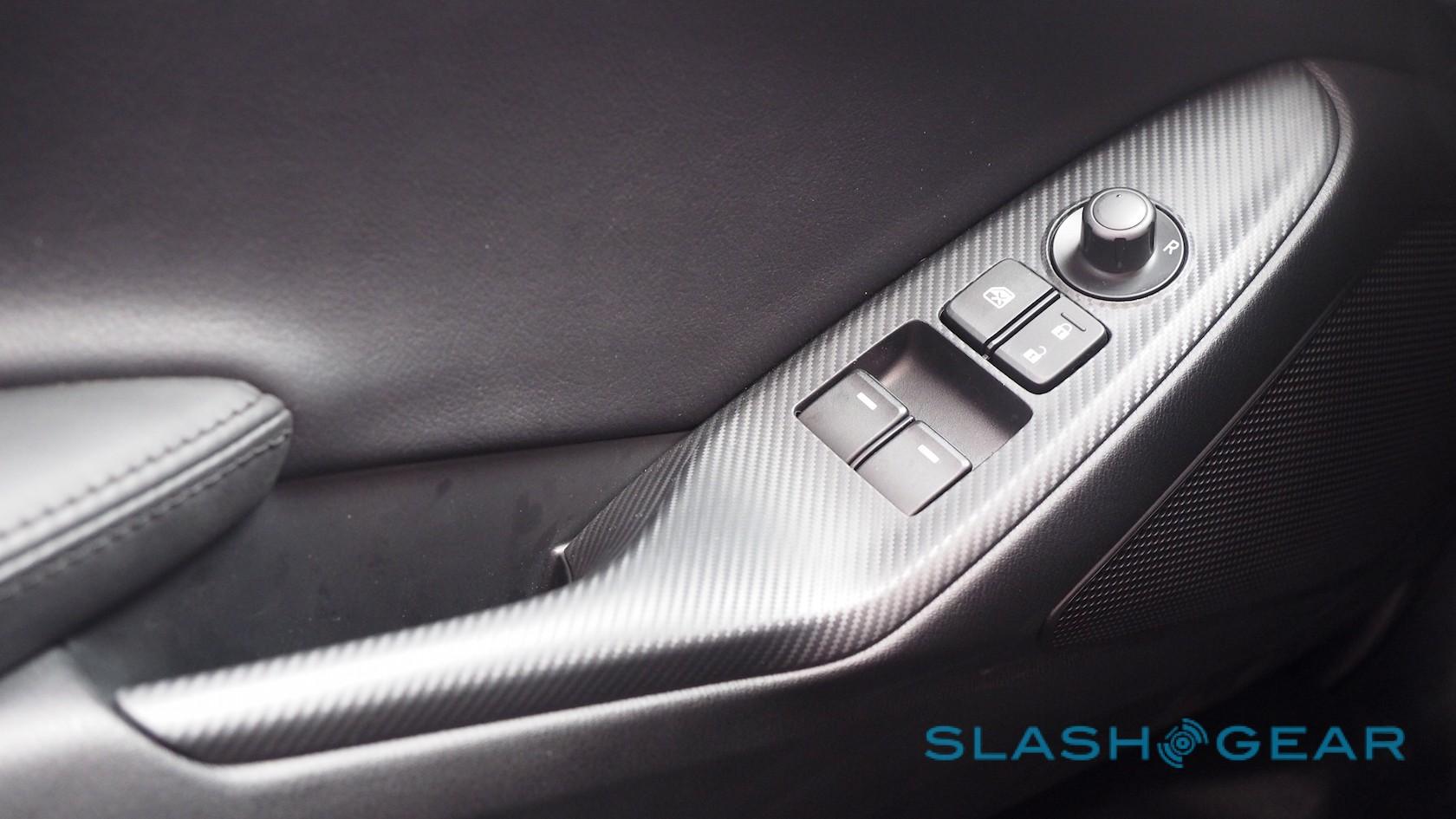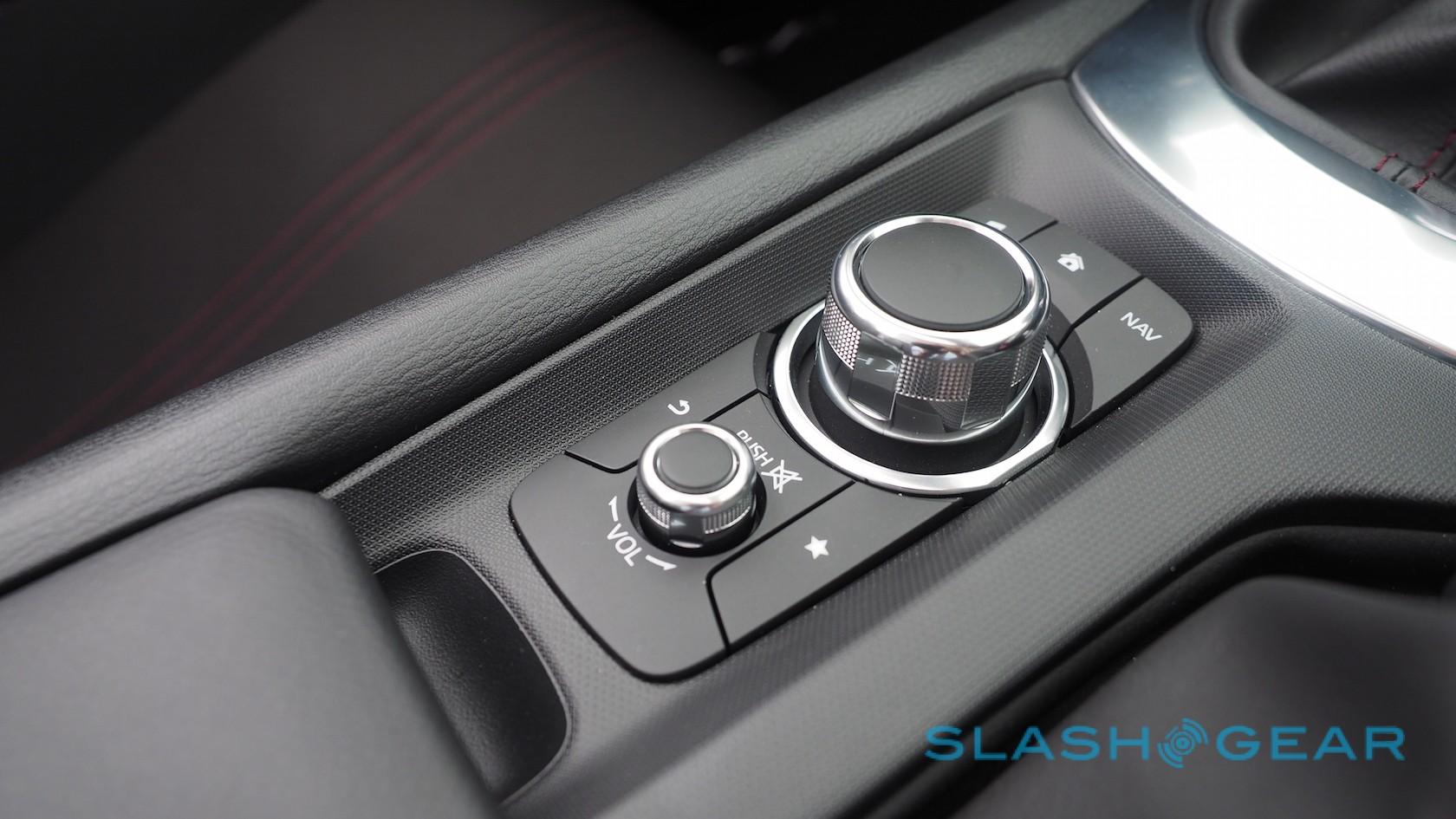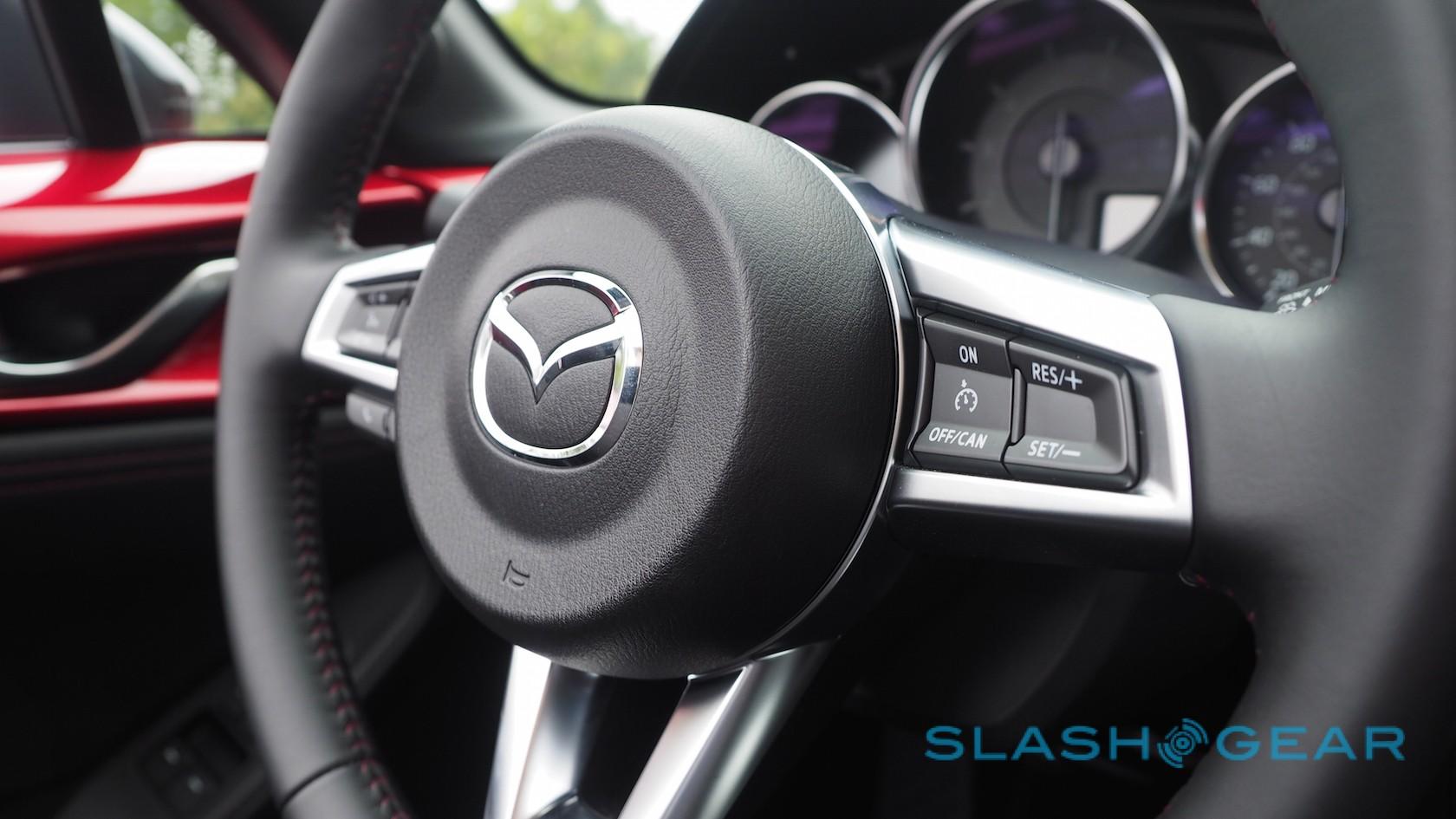2016 Mazda MX-5 Miata First Drive - Roadster Reborn
It's close to being a miracle that the 2016 Mazda MX-5 Miata exists. As the cars around it get bigger, more luxurious, and more insulated from the road beneath them, and as semi-autonomous technologies become more and more mainstream, a tiny, purist roadster seems all the more an outlier. Surely Mazda's accountants and its "brand strategists" will weigh in and, for this fourth-generation, dilute the MX-5 with demands for practicality? Read on, because I have good news.
If the second- and third-generation cars were iterations on that original Miata twenty-five years ago, this new model is a whole different beast entirely. Mazda's KODO design language is in full force and looks, to my eyes and most of the other people I asked, incredible.
Somehow, Mazda has managed to make the new MX-5 smaller and yet also more capacious inside. I say "somehow" but, in reality, it's a triumph of packaging, materials selection, and some near-wafer-thin shaving away at the dimensions.
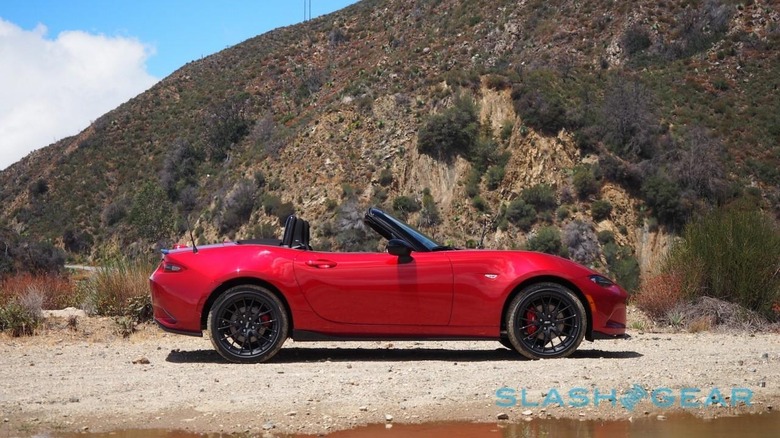
So, the new Miata has 45mm shorter overhangs and is 5mm wider in both the front and rear track; Mazda switched to LED lights because they allow the lamp assemblies to be thinner. The engine has shuffled back 22mm and dropped 13mm, while the wheelbase is 15mm shorter.
The driver sits 20mm lower and 15mm closer to the center of the car, while the hood height is reduced 28mm: that may not sound much, but it adds up to greater visibility out of the windshield both laterally and horizontally. Similarly, by reducing the steering wheel radius by 2mm, and giving it 10mm more upwards tilt, Mazda gives the driver 12mm more leg clearance.
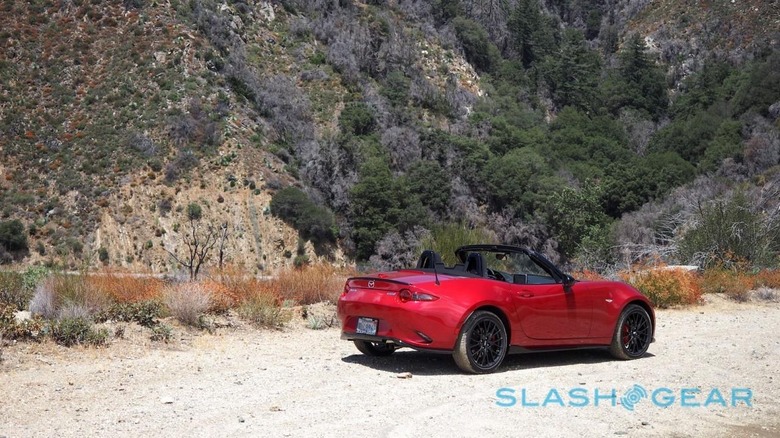
Altogether, it's 150 pounds lighter – 2,332 pounds for the manual, and 2,381 pounds for the automatic – than the car it replaces.
There are also new seats, a decade in the making. Mazda has junked the traditional foam and springs, opting for a high-tension cloth mesh. Not only is it thinner and lighter than the traditional materials, it also promises to mold around your body more readily, hugging you in place when you're cornering rather than your shoulders slipping from bolster to bolster.
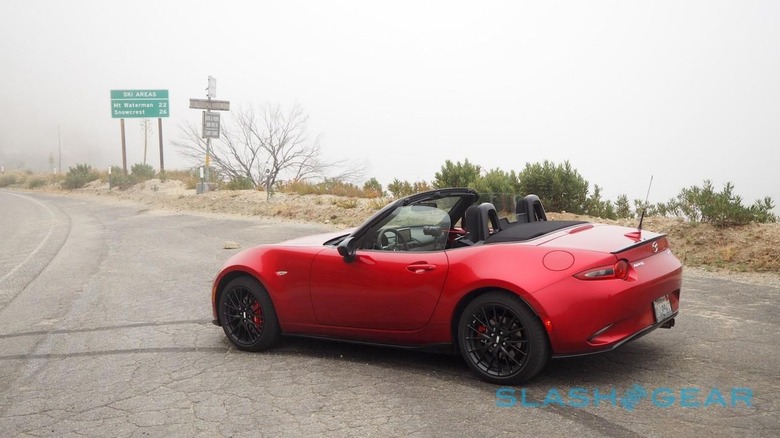
There'll be three models of MX-5 to choose between, and interestingly Mazda is looking to bypass the traditional base-better-best tiering this time around. The Sport starts at $24,915 (plus $820 destination) as the entry point to the range, then there's the Club from $28,600, and finally the Grand Touring from $30,065.
What Mazda doesn't want you to assume is that the Grand Touring is the "best" MX-5, though if you want the most compliant ride for long-distance driving that's probably the case. It's the luxe version, certainly, with black leather, lane departure and blind spot warnings, smart keyless entry, rain-sensing wipers, and more.
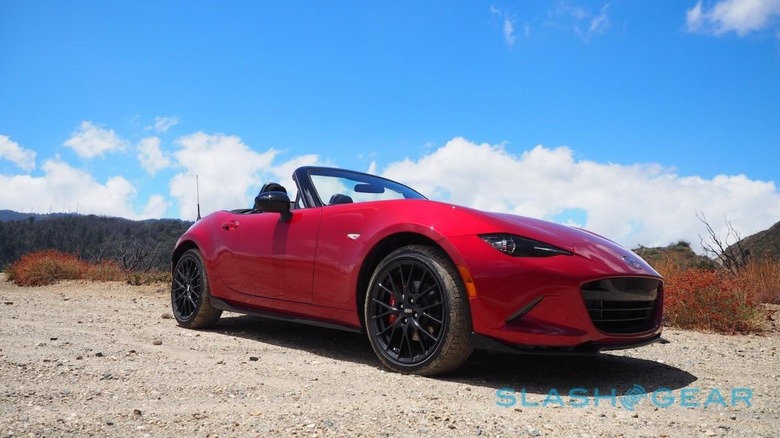
Those with more interest in throwing their Miata into the corners, however, should look to the Club, which Mazda expects to appeal to younger drivers keen on its tauter suspension. It'll also be the only MX-5 in the range to be offered with the $3,400 Club Brembo/BBS Package, which adds Brembo front brakes, 17-inch BBS dark alloy wheels, side sill extensions, and a rear bumper skirt.
It's a solid strategy, considering the gamut that Miata owners run, but it does introduce a few spec glitches. You can't get a Club with leather seats, for instance, something Mazda says it may reconsider based on customer feedback.
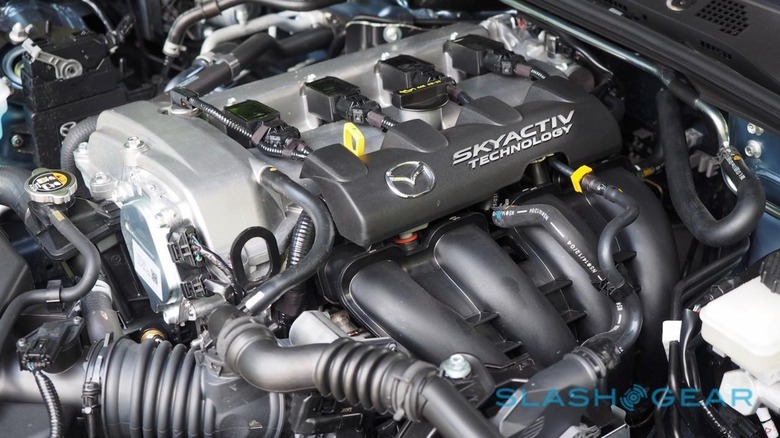
No matter which you choose, there are some common features. Most important is the engine, a 2.0-liter SKYACTIV engine as standard for the US at least – in Japan, for instance, the MX-5 has a 1.5-liter engine – paired with either a 6-speed manual transmission or a 6-speed automatic.
There were some furrowed brows in Miata fan-land when Mazda announced power figures for the new engine. With 155 HP and 148 lb-ft of torque, the fourth-gen MX-5 is down on horsepower compared to the outgoing car.
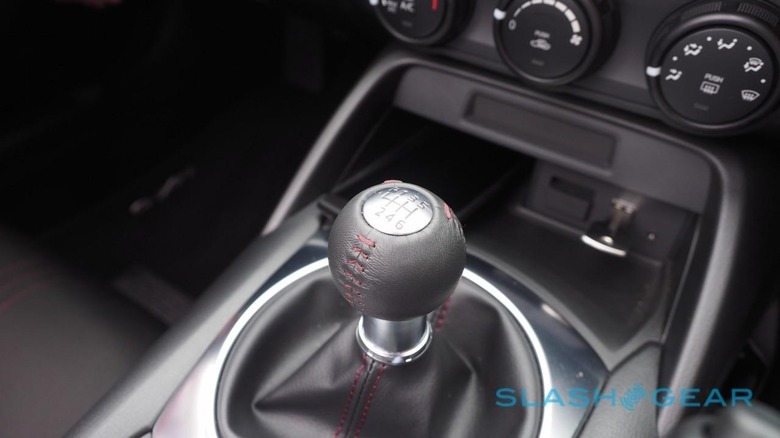
It's not quite so clean-cut, however. The old Miata mustered its 167 HP at a heady 7,000 rpm (and its 140 lb-ft of torque at 5,000 rpm); in contrast, this new car hits peak horsepower at 6,000 rpm and peak torque at 4,600 rpm. At any point below that, you're getting more power from the fourth-generation MX-5 than you would in its predecessor at the same engine speed.
As a pleasing side-effect, fuel economy has improved too. Mazda says the manual MX-5 should manage 34 mpg on the highway and 27 mph in the city, whereas the auto will do 36 mpg highway and 27 mpg city.
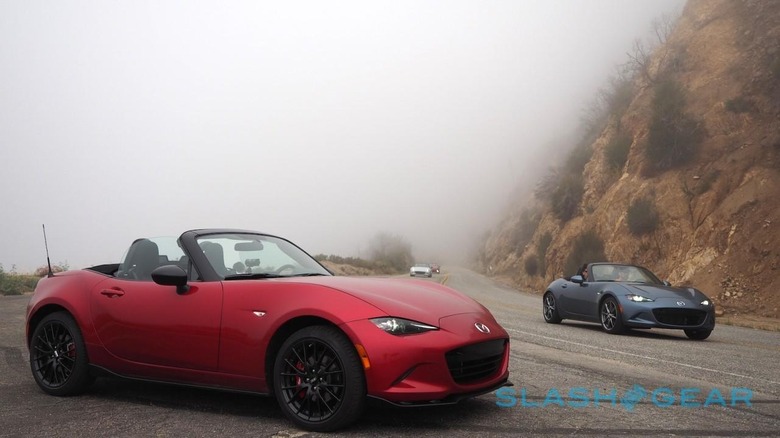
Numbers, numbers, numbers... but how does it drive? I'm really glad you asked.
We started out in the MX-5 Club with the Brembo/BBS package, the sportiest of Mazda's line-up. The first thing you notice is the impression of speed: with under 200 HP, the new Miata isn't going to win any drag races, but the combination of the super-low driving position and the occasional throaty burble of the engine make you feel like you're going much faster than you actually are.
It makes for a car that's fun at usable speeds. Mazda may have a racing division and the MX-5 a cup team of its own, but for the road car it eschews the track – not even quoting performance figures, though expect around six seconds to do the 60 mph dash – and focuses on contorting your face into a grin and keeping it that way at rates that leave you safe from tickets.
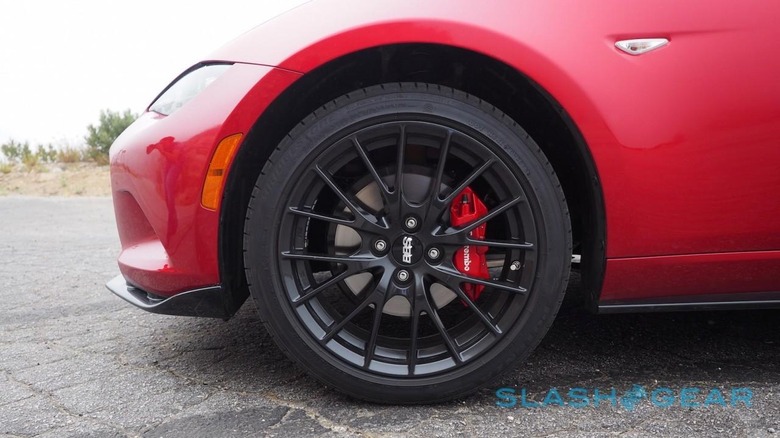
Plant your right foot and the Miata whooshes up toward the redline eagerly. Switch to the brake and it slows with similar enthusiasm; the bigger pads and calipers on the Brembo package are more then enough to haul the lightweight car to a halt, proving reluctant to show any fade during our road tests.
For the first time, the new MX-5 uses electric power steering, though unlike most such examples Mazda has fitted the motor to the rack, rather than up by the wheel, to make it feel more direct. They've also tuned it so that, while the assistance is lighter at the center, it weights up the more you turn. Altogether there's a fantastic amount of feedback funneled through: it's not exhausting to drive for extended periods, but neither are you needlessly insulated from what's going on at the tarmac.
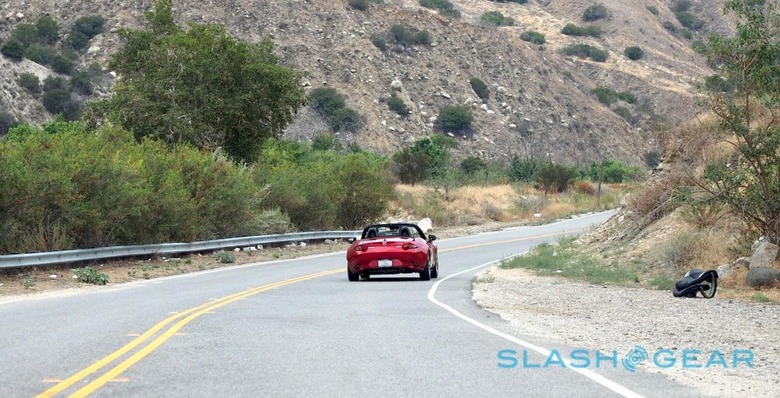
Something that does take a little getting used to is how much the Miata rolls. Throw the little car into a corner and you can feel it tilt around you, something Mazda designed in on purpose: the roadster just grips and grips, pirouetting neatly.
When you do start to reach the limits, however, that's telegraphed straight through to the driver and is easy to fix. You don't have to be a racing enthusiast to feel the loss of grip approaching or, indeed, to correct it; the Miata colludes with you like it wants to keep playing.
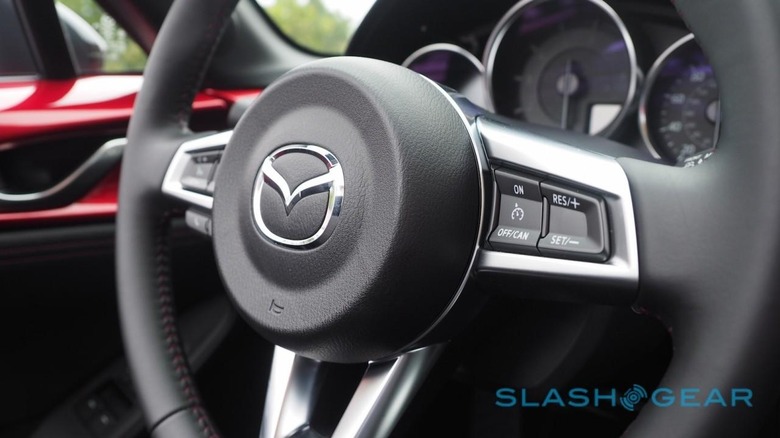
The manual gearbox helps there, too – frankly you should steer well clear of the optional automatic, because it really doesn't suit the tone of the MX-5 – with its short and snappy throw. The stick is stubby, though Vincent did say he'd prefer it to be slightly lower, and it snicks through the ratios with ridiculous ease. It's paired with a light, driver-friendly clutch that didn't prove exhausting when we got stuck in freeway traffic.
Switching to the MX-5 Grand Touring, the immediacy is still there but the ride a little more supple. The more expensive car plays its hand on less pristine road surfaces, where the more compliant suspension smooths out shoddy freeways.
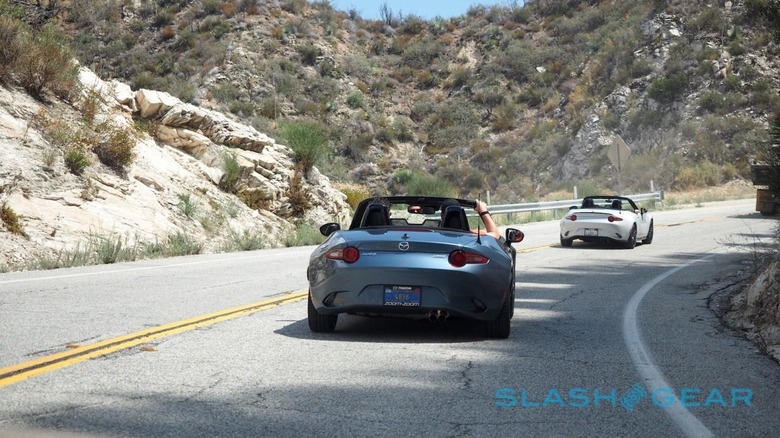
Don't expect miracles, mind, as imperfections are still passed through into the cabin, only they're slightly less raw than in the Club. Similarly, though Mazda has stitched more acoustic insulation into the Grand Touring's roof, there's still plenty of road and wind noise. The leather seats are comfortable but I missed the grippy cloth during cornering.
Another step in the direction of purity is the absence of the convertible hard-top the previous Miata offered, and for the moment at least there's no sign of one on the roadmap. "Yeah," Mazda vehicle development engineer Dave Coleman observed dryly when asked about a possible folding hard-top for the fourth-gen car, "we used to make those."
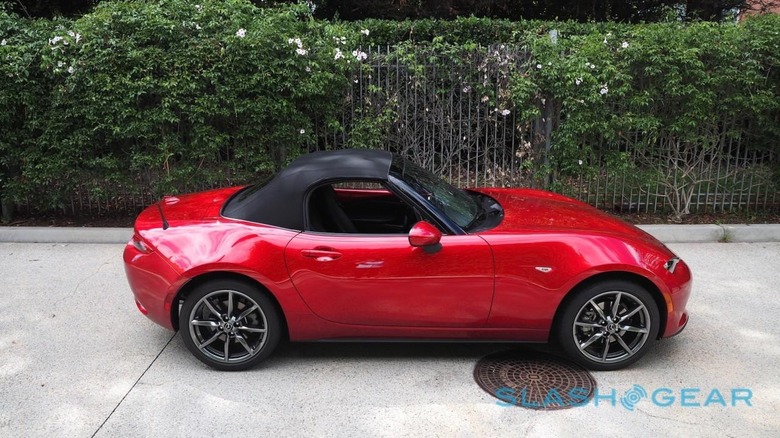
It's no great loss. The new roof has a Z-fold design, with a solid aluminum panel above your head that replaces the structural bar the old Miata used. That cuts wind noise but is also thinner, helping with headroom.
The mechanism itself is easier, too: pull a handle in-between the seats and the roof pops up a few inches, so you can more easily reach back and pull it up and over you. There's a single latch to lock it in place. As for dropping it down again, you simply yank on the latch and then push it all back; the only mildly tricky part can be pressing it down so that it clips into the rear deck properly.
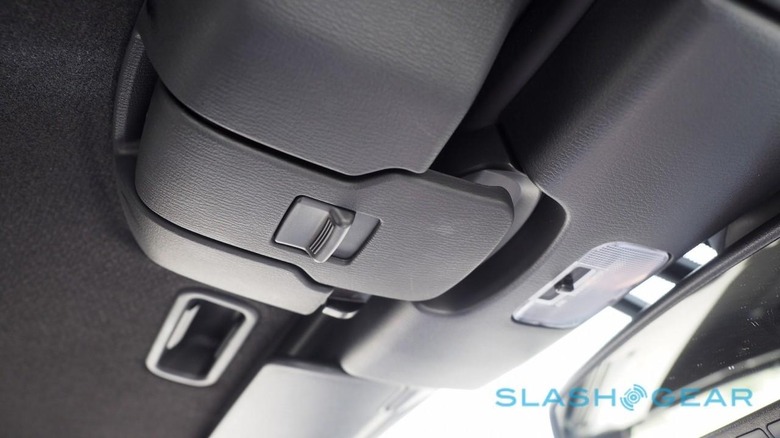
Altogether it's slick enough that you can do it one-handed. Meanwhile, headed down a freeway onramp and realizing we'd left the roof stowed, even at 45 mph we could muscle it upright, though that's obviously not something we'd recommend the driver do.
If there are compromises in the cabin, they're the result of Mazda doing its best to hit both price and weight targets. The standard kit list on the Sport is solid: air conditioning, power locks and windows with remote keyless entry, a leather-wrapped wheel and shifter, Bluetooth, and a 6-speaker audio system with speakers in the driver's headrest.
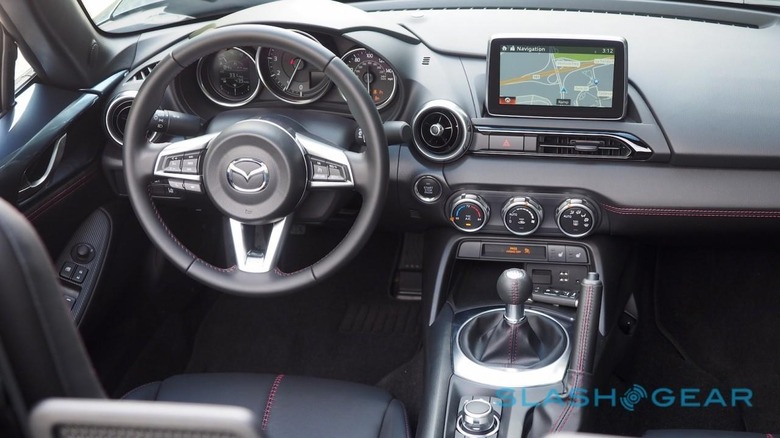
The Club throws in accent stitching on the cloth seats, an extra USB port, Bose 9-speaker audio system with both the driver and passenger getting headrest speakers, SiriusXM, and Mazda Connect, a 7-inch touchscreen atop the dash with support for HD Radio, apps like Pandora and Aha on your phone, and SMS. The Grand Touring adds navigation to Mazda Connect.
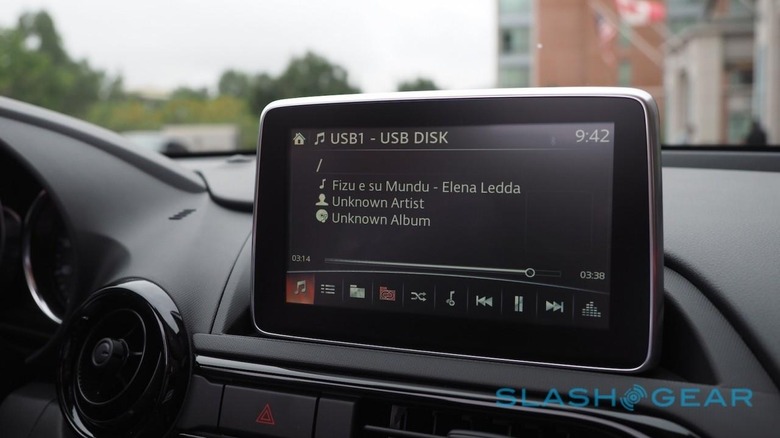
Mazda's infotainment system is decent but a little over-protective. The touchscreen only works when you're stationary; pull away from the lights and you'll have to use the jog-wheel/joystick down in the center console to navigate.
Unfortunately it's not always clear how to access all the features, like zooming maps or skipping tracks when you're not on the media page.
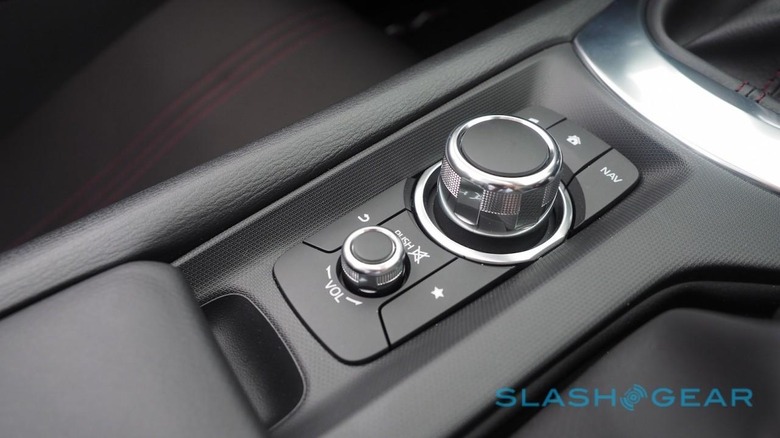
Meanwhile some of the materials err on the plasticky side. The sun visors are sharp-edged and feel cheap, while the tops of the doors may be body-colored but they're plastic not metal, and flex a little when you squeeze them.
There's no glove compartment, only a cramped nook between the seats with a locking door, along with a shallow bay under the center armrest.
That's also where you'll find the cupholders, marginalized ergonomically in favor of leaving you elbow room for changing gear. "The cupholders are now kinda awkwardly under your armrest," Coleman admitted scathingly, "because in a sports car shifting is more important than drinking." They also detach altogether, and one can be repositioned in the passenger footwell if you prefer easily-accessible caffeine perks to the sprightly drive.
My advice would be to forget the coffee. Dump your bags in the surprisingly capacious trunk – deeper than you expect – but don't bother with too much, because there's the 50/50 weight balance to consider. Bring sunglasses. Perhaps massage your cheeks for a few minutes, to prepare them for an excess of smiling.
Mazda has knocked the 2016 MX-5 out of the park. The new car channels the best of the original Miata with the combined knowledge of 25 years of development: yes, it's technically clever, but that engineering doesn't marginalize or unduly insulate the driver. There's technology, but not for its own sake; comfort, but not if it comes with a compromise.
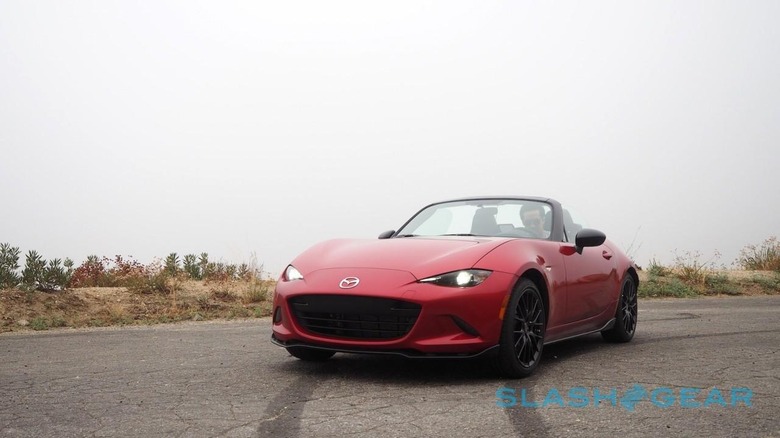
Don't mistake that for the new Miata being too serious: the MX-5 is fun distilled down onto four wheels. If there's a flaw it's that the Miata is so singularly unsuited to so many drivers: unless you've got another, more practical car waiting in the garage, the little Mazda's shortcomings in cabin and luggage space will undoubtedly limit its audience.
Thankfully, Mazda didn't use that as an excuse to leave behind what makes the MX-5 great. The 2016 Miata is spritely and eager and playful, like it should be. Not for everyone, no, but this latest taste of Mazda's 25 year old recipe is sweeter than ever.

